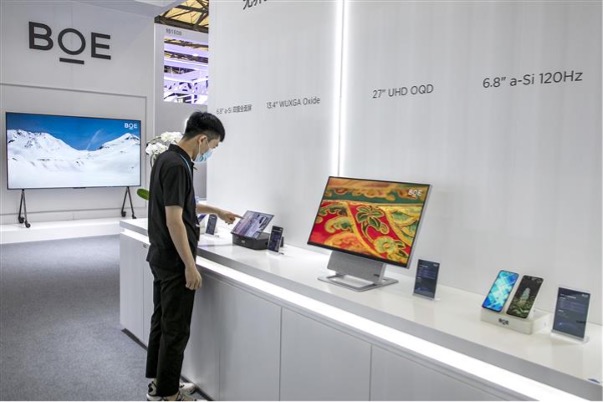

China is home to various TFT LCD panel manufacturers, all offering exceptional services and high-end products. China remains one of the top sources for TFT LCD panel manufacturing, as they have been producing some of the best quality panels available on the market. Many Chinese technology companies specialize in providing these superior TFT LCDs, and several of them have even managed to make it into the top ten list of China's leading TFT LCD panel producers. These companies are known for their efficient service, impressive product lineup, reliability, innovative approach to design, and customer service excellence. If you are looking for an excellent China-based supplier for TFT LCD panels, it would be wise to consider one of these top 10 China TFT LCD manufacturers.
China is a leading producer of TFT LCD panels, with industry leaders such as BOE Technology Group Co., Ltd. (BOE) at the forefront of innovation. Founded in 1993, BOE has developed a comprehensive business structure featuring port products and services for information exchange as well as healthcare solutions like its revolutionary MLED technology. In 2021, BOE boasted an impressive 70,000 independent patent applications, and more than 90% of its new patent applications are for invention patents. Additionally, over 35% of those inventions' patents can be found overseas in the United States, Europe, Japan, South Korea, and other countries. China's TFT LCD panel manufacturers continue developing their technology by innovating on existing models such as LCD screens and LCD panels to provide better solutions for customers worldwide.
China-based Tianma is a highly reputable TFT LCD panel manufacturer with over 30 years of expertise in the display solutions industry. Since 1983, the company has grown to become a trusted China TFT LCD panel provider, and in 1995, it obtained a public listing on China's Shenzhen Stock Exchange. With tech and production capabilities at the top of their game, Tianma specializes in SLT-LCD, LTPS TFT-LCD, AMOLED, In-cell/On-cell integrated touch technology, Flexible Displays, Force Touch TED Plus, fingerprint recognition under/on-screen and Mini/Micro LED segments. They have set the benchmark for future innovative developments in terms of LCD panels, LCD screens, and more. Offering unbeatable support services around the globe that are coupled with advanced technology makes Tianma a forerunner for China TFT LCD panel manufacturers.
China's IVO is one of the top 10 China TFT LCD panel manufacturers and has been making a name for itself since 2005. From its Kunsan Jiangsu base, it now employs more than 3000 staff, including 400 dedicated R&D employees. IVO also boasts a G-5 TFT panel production line, and its products are used in a variety of cutting-edge applications: 60% for notebook displays, 23% for smartphones, and 11% for automotive uses. This makes it an important player in the China TFT LCD market as well as gaining great recognition worldwide in the notebook display industry.
With China being one of the leading suppliers in the global TFT LCD market, 4th in the top 10 manufacturers is TCL CSOT. This China TFT LCD panel manufacturer has been expanding its production capacity with continuous developments in technology and gaining a more solid global presence. According to the latest TV shipment stats, China's CSOT has ranked 3rd in the world for producing TVs and 1st for supplying domestic 6 major brands since 2014. Furthermore, it holds strong places on the world scale when it comes to 55-inch UD product shipments (1st worldwide) and 32-inch UD product shipments (2nd). G6 LTPS-LCD production line is also amongst its highly lauded products, boasting second place in small and medium sizes with the most accelerated growth rate. Focused on independent innovation-driven development, TCLCSOT reinforces its position as China's leader in TFT LCD screen technology by accumulating 12185 patent applications since 2019.
China's TFT LCD panel manufacturer, Truly Semiconductor Co., Ltd., was established in 1991 and dedicated to TN-LCD production and became the first China-based CSTN/LCD line producer in 1995. In 2003 they obtained the OLED patents from Kodak, followed by mass production of TFT-LCD modules in 2012 and breakthrough technology in mobile 3D displays. Their 2013 production launch of naked-eye 3D displays for phones and tablet computers solidified their position as China's top 10 TFT LCD manufacturers. To expand its portfolio further, it invested in Truly (Huizhou) Smart Display Co., Ltd., which specializes in G4.5 AMOLED and TFT displays. Truly sets an example for China's other TFT LCD panel manufacturers through its sustained 25 years of research and development, innovation, and brand recognition.
Foxconn Technology Group founded China’s TFT LCD panel manufacturing company, Innolux, in 2003. With its headquarters and factory located in Longhua Foxconn Technology Park in Shenzhen and over 14 production bases situated across China like Nanjing, Ningbo and Foshan, Innolux is known for its comprehensive vertical integration that enables cutting-edge display technology research and development. The high quality and reliability of TFT LCD panels manufactured by Innolux have made them available to be used by some of the major global electronics giants like Apple, Lenovo, Hewlett-Packard Panda, Nokia, and Motorola. Furthermore, its amalgamation with Chi Mei Electronics and Tong Bao Optoelectronics in March 2010 has led to a significant improvement in the level of the world plane display industry.
Founded in 2001, China's top 3 TFT LCD panel manufacturer HKC has come a long way since its inception. The company designs, manufactures, and markets a full range of TFT LCDs from 1 inch to 60 inches with an annual sales amount reaching up to half a billion USD. As it looks for global expansion opportunities, HKC has established branch companies in Russia and India and formed strategic relationships with customers worldwide. In 2010, the China-based firm moved into a new industrial park and is now capable of producing 1 million displays per month. Thanks to advanced technologies and excellent quality control standards, HKC has been praised by its customers both at home and abroad and continues to prove itself as a reliable China TFT LCD panel manufacturer.
Panda is one of China's top 10 TFT LCD manufacturers, utilizing cutting-edge technology from China Electronics (CEC) to offer a wide range of products such as crystal resonators, thermal-sensitive crystals, ordinary oscillators, voltage-controlled oscillators, and temperature-compensated oscillators. These are used in various applications of TFT LCD screens that can be found in products like LCD TVs, monitors, and laptops. Panda studies customers' requirements with utmost care and provides reliable services and quality products. With the help of its diverse pricing strategy, it assists its clients in finding value for their money across global markets.
China has a flourishing automotive technology industry, and Eagle Tech is one of China's top ten TFT LCD panel manufacturers. They understand the special requirements of their use environment, such as moisture-proof, dust-proof, anti-glare, high brightness, sun leakage resistance, and temperature resistance, in order to ensure the optimal performance of their displays. Having years of experience in providing Resistive touch screens, PCAP touch screens, and IPS panels make Eagle Tech the trusted electronic display manufacturer for automotive technologies to meet consumer expectations.
China is the leading source of TFT LCD panel manufacturers, and Eagle Tech has been making a name for itself as one of China's top 10 TFT LCD manufacturers. Not only do they offer quality automotive TFT LCDs in sizes ranging from 3.5" to 21.5", but their products boast excellent durability as well; if you are looking for a reliable China TFT LCD provider that can deliver quality products for your applications, look no further than Eagle Tech.
TFT LCD manufacturing is an incredibly important part of the technology industry, and Century Technology (Shenzhen) Co., Ltd. (CTC) is one of China's top 10 TFT LCD manufacturers. In addition, CTC invests in global optoelectronics industry personnel who specialize in TFT-LCD research and development, as well as manufacturing display panel products such as laptops, PCs, monitors, and LCD TVs. The production line project was installed during the eleventh five-year plan to position CTC at the forefront of TFT-LCD production lines for the Pearl River Delta region. Looking ahead to late 2008, this ambitious project will be put into action – it is sure to leave a lasting impact on the growth of TFT production globally.
China is the world's largest producer and exporter of TFT LCD panels, making it a great resource for any company looking to purchase them. China is home to some of the world's most respected TFT LCD manufacturers, with the top 10 China-based TFT LCD panel manufacturers providing displays that consistently exceed industry requirements. All ten have been commended for their amazing product designs, expertise, and quality standards. Collectively, these companies serve customers all over the world by producing panels that are reliable and high-performance – making China an important resource for businesses seeking out cost-effective TFT LCD panels.
China is quickly becoming the leader in TFT LCD technology. The top 10 China TFT LCD manufacturers are a testament to this, as they provide outstanding quality at competitive prices without sacrificing any of the standards that people have grown to expect from China's expertise and craftsmanship.
It's clear that China is fast becoming an unstoppable force when it comes to LCD panel production and innovative screen solutions. With its ability to make efficient panels for various applications, China is respected around the world for its skillful production of TFT LCD panels and screens. Additionally, with these reliable manufacturers trying to ensure maximum customer satisfaction with competitive pricing and high-quality products, China has become a trusted source of LCD screens worldwide.
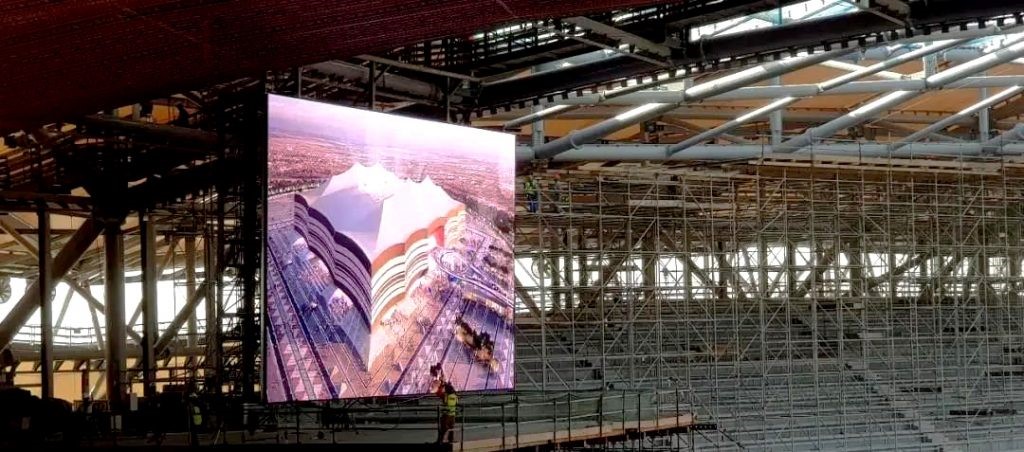

INTRODUCTION
The senior men's national teams of the members of the Fédération Internationale de Football Association (FIFA), the world's governing organization of association football, compete in the FIFA World Cup, commonly referred to as the World Cup. Excluding 1942 and 1946, when it was delayed because of World War II, the championship has been awarded every four years since the inaugural tournament in 1930.
The largest competition ever will take place in the fall for the first time in history. The 2022 FIFA World Cup will be held in Qatar, and because of the extreme heat, it will begin in November of this year rather than during the traditional summertime. However, countries like Belgium, Brazil, Argentina, and others are ready to dash France's chances of repeating as soccer's finest national team. France is keen to defend its 2018 crown as the sport's top national team.
The FIFA World Cup 2022, which is scheduled to take place in Qatar, has started, and planning is already underway. Fans of this wildly popular game are also busy preparing to witness their favorite teams and players in action as teams and ground personnel gear up for the international competition. This has led to a rise in demand for the best televisions in time for the FIFA World Cup. 32 teams will be divided into eight four-team groups for the showcase tournament, which starts with group stages. In a round-robin system, each team will face the other three teams in its group once.
The World Cup is not only the most renowned association football competition ever, but it's also the most watched and followed athletic event ever. An estimated 715.1 million people watched the World Cup final, bringing the total number of viewers for the tournament to an estimated 26.29 billion.
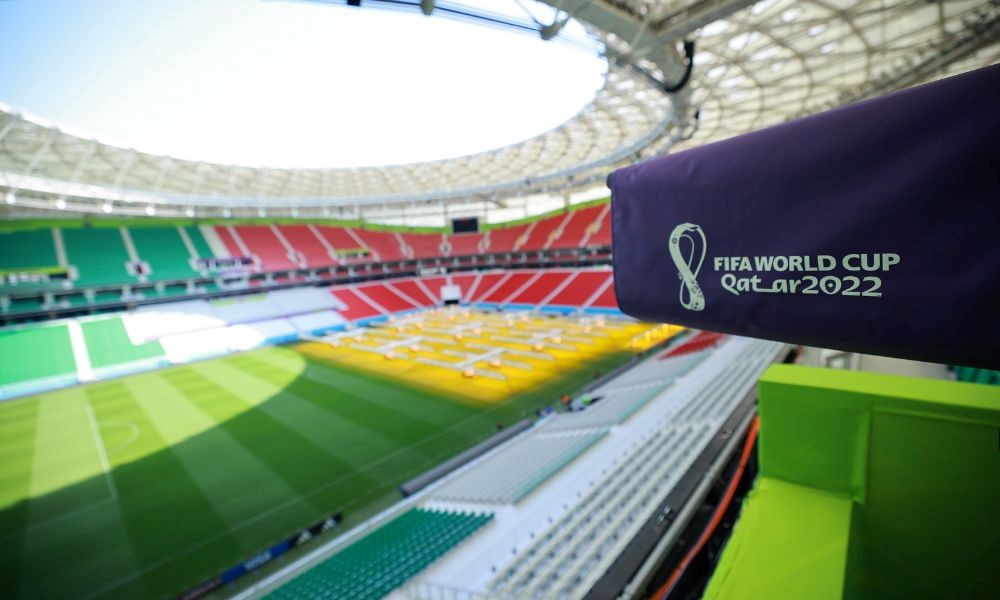
BROADCASTING AND VIEWERS
The World Cup is now the most watched and followed athletic event in the world. It debuted on television in 1954. An estimated 26.29 billion people watched every match of the 2006 World Cup overall. The tournament's championship game was viewed by 715.1 million people or about a tenth of the world's population. 300 million people watched the 2006 World Cup draw, which determined how the teams would be divided into groups.
Approximately 12 million people watched the opening game of the American men's national team in the Qatar 2022 World Cup on the broadcast.
With an average of 563,000 viewers, it was the most-watched Group Stage Match on Fox Sports ever.
TECHNOLOGY AND DISPLAYS – FIFA WORLD CUP 2022
Qatar is employing artificial intelligence (AI) to carefully monitor spectators at all eight venues that will stage the matches from November 20 to December 18, with over 1.5 million scheduled to attend the FIFA World Cup 2022 there.
Semi-automated offside technology will be used during the FIFA World Cup 2022TM in Qatar beginning on November 21. This technology will provide enacted reforms for the video match officials and the on-field officials to help them make offside choices on the grandest stage of them all more quickly, accurately, and consistently.
The big LED scoring panels were one of the LED displays that Unilumin and Daktronics jointly produced for the stadium.
Due to the hot climate and intense sunlight in Qatar, the World Cup's LED displays must function admirably in terms of heat dissipation, brightness, and other factors.
The tech staff at Unilumin customized the cabinet design and used a particular module mask, driver IC, and chip that may increase heat dissipation efficiency by more than 50% to improve the viewing experience for fans all over the world.
The brightness has also been significantly increased, which may not only guarantee the displays' long-term stability but also their ability to display clearly in bright conditions, allowing spectators to enjoy the game from any location on the ground.
The LED display terminals from Unilumin also come with a self-developed platform for display management, operation, and maintenance, which enables intelligent remote control of playback, broadcast, and event engagement.
For many sports events stadiums, commercial display panels and display control systems have become essential equipment. Today's football stadiums have conventional light bulbs and CRT displays supplanted with LED/LCD displays, and the displayed substance has significantly evolved from numbers to text, photos, and video as a result of the advancement of LED and LCD screen technology and the transition and updating of sporting venues.
FEATURES OF A STADIUM DISPLAY SCREEN
Stadium LED Screens are becoming a bigger and bigger part of many sporting events. Along with these fundamental duties, it is progressively becoming the focal point for evoking the emotions of the viewer, portraying the scene's ambiance, and emphasizing the thrill of sporting events.
Around baseball fields, tennis courts, football stadiums, and other sporting arenas, the LED display screen is utilized for advertising. The repetitive commercials are played as you enjoy the fantastic game. It is the ideal fusion of contemporary athletics and business operations.
The humanized look design also contributes to the stadium's design while safeguarding the athletes' personal security.
APPLICATIONS OF LCD DISPLAY WALLS IN STADIUMS
The stadium's exterior high-brightness digital display screen is mostly utilized for event broadcasts and advertising. In order to ensure that viewers can clearly observe the event from all angles, outdoor digital display panels must have great display effects, a broad viewing angle, and a high level of brightness. Additionally, it is possible to remotely control the outdoor display screen's information at any moment.
Electronic bulletin display panels are a necessary item since sporting events are large-scale gatherings of people. To show announcements, schedules, etc., display screens can be erected in the office complex, ticketing center, Television broadcast center, audience entry passage, VIP service facilities, and athletic life service facilities in the gym. Using the electronic notification screen, the announcement's content may be shown prominently and updated whenever necessary.
Install digital touch-screen displays in locations where the main flow of attendees is focused, such as the athletes' living quarters and ticketing center, so that the audience can quickly access pertinent two- and three-dimensional data. These displays should include venue distribution, match schedules, ticketing data, event space routes, urban traffic paths, and visitor routes. In the digital screen display, you may also select a screen that can be divided into two separate displays, one for touch-interactive content and the other for advertisements and other information.
Commercial LED/LCD is becoming a need for contemporary, large-scale sporting stadiums. The gymnasium's display system must be capable of correctly, promptly, and clearly displaying the results of sporting events. In addition, the system must support several sports competition projects, enable maintenance and updates, and have a user-friendly, accurate, quick, and simple man-machine interaction.
To conclude, we can say that the features don't just let you display data; you can also showcase any material you want, such as sponsorship ads and camera feeds.
CONCLUSION
Due to the growing use of LED technology, many international sporting stadiums now come equipped with LED displays and display control systems as standard. LED displays for the FIFA World Cup Qatar were jointly delivered by Unilumin and the internationally renowned company Daktronics as the representative of LED Intelligent Manufacturing in China. Among them, the football field will be illuminated by the sizable LED scoring screens.
Due to the hot climate and intense sunlight in Qatar, the World Cup's LED displays must function admirably in terms of heat dissipation, brightness, and other factors. To give fans everywhere a better viewing experience, the company’s technical team modified the cabinet design and used a certain module mask, driver IC, and chip that may increase heat dissipation effectiveness by more than 50%. The brightness has also been significantly increased, which may guarantee not only the displays' long-term stability but also their ability to display well in bright conditions, allowing players from all positions to enjoy the game.
Additionally, the LED display endpoints are outfitted with a system for display management, operation, and maintenance that was independently designed. This platform enables intelligent remote replay, broadcasting, and participant engagement during the event. It will be the focal point of the Lusail Stadium as a crucial interactive experience for the dissemination of information and spectator involvement.
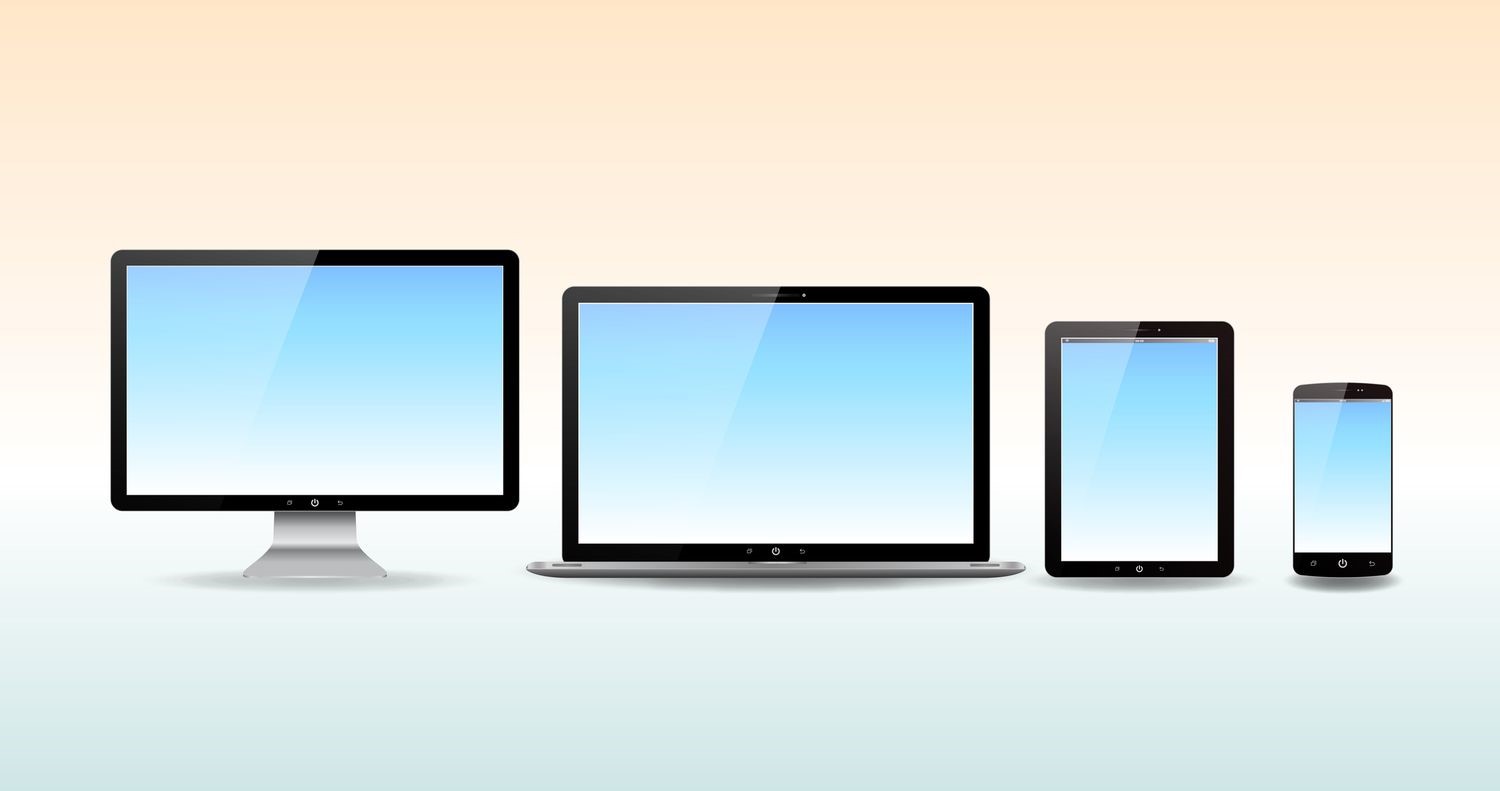
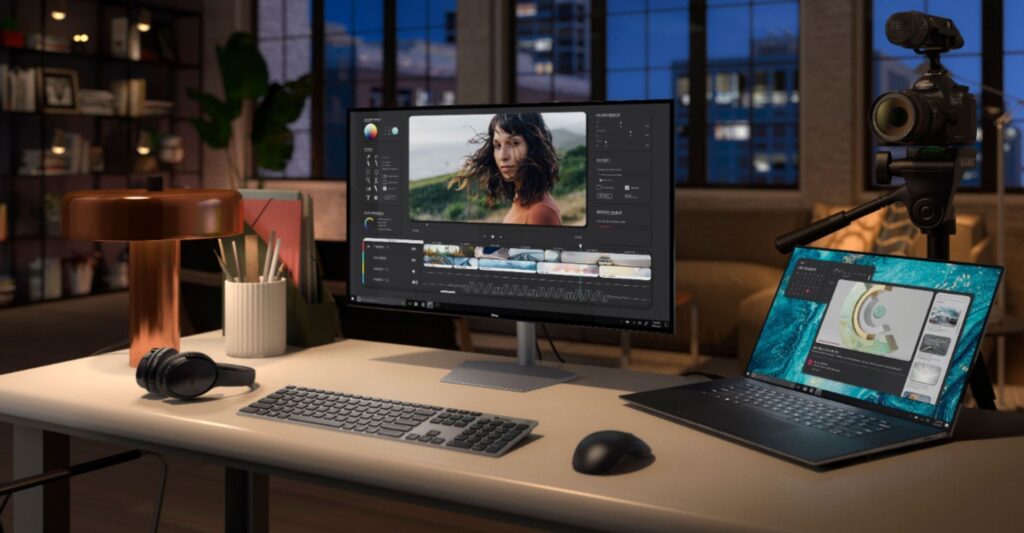
INTRODUCTION - WHAT’S A LIQUID CRYSTAL DISPLAY?
An LCD (Liquid Crystal Display) is a form of flat screen display, that relies heavily on liquid crystals to function. The LCD's design involves placing a liquid crystal cell between two parallel glass substrates, mounting a TFT (thin film transistor) on the lower substrate glass, mounting a color filter on the upper substrate glass, and modulating the signal and voltage on the TFT to control the liquid crystal molecules. Rotate the direction to decide whether or not each pixel's polarised light is emitted in order to meet the display's goals.
LCDs have a wide range of uses for both individuals and companies because they are often utilized in mobile phones, TVs, workstations, and instrument panels.
As implied by the name, liquid crystal particles make up LCDs. In most cases, a fluorescent backlight illuminates liquid crystals rather than the liquid crystals themselves emitting light.
Since their discovery in the 1800s, liquid crystals have undergone several alterations that have made them ideal for a wide range of applications.
What are THE FEATURES OF LCD?
(1) Low-voltage micro-power consumption - Throughout their lifespan, LCDs offer significant energy savings. In general, LCDs use half to two-thirds as much energy as a traditional CRT display.
(2) The appearance is small and exquisite; the thickness is only 6.5~8mm.
(3) Passive display type - Eyestrain is a frequent ailment brought on by prolonged looking at computer screens and other electronic gadgets. However, the LCD function does not cause glare, discomfort, or eye strain.
(4) The amount of displayed information is large - Information or images may be presented in a huge, clear manner since the LCD's pixels can be designed to be very tiny.
(5) Easy to colorize - The color gamut is developed to make these distinctions evident and to bring together the colors that can be used in common across devices, even if color imaging devices encompass a wide variety of equipment, such as digital cameras, scanners, displays, and printers.
(6) No electromagnetic radiation - The absence of electronic radiation is a benefit that is advantageous due to its safety for human health and ability to maintain information secrecy.
(7) Long life - The lifespan of this type of gadget is quite lengthy, but the life of the liquid crystal backlight is limited. Nevertheless, the backlight component may be changed. Although they don't normally live forever, LCDs have a longer lifespan than other display technologies. An average LCD might operate for up to 60,000 hours. That might convert into 20 or more years of utilization, depending on how regularly you use it.
THE HISTORY OF LIQUID CRYSTAL DISPLAY (LCD) AND ITS INDUSTRY
The liquid-crystal display was created in 1964 at RCA Laboratories in Princeton, New Jersey. The twisted-nematic (TN) mode of functioning, which was developed in 1970, was the key to LCD's initial commercial success. Small-size LCD screens were provided by LCD producers for use in portable items like digital watches and pocket calculators. A TFT (thin-film-transistor) array was used by Sharp Corporation in 1988 to show a 14-inch active-matrix full-color full-motion display. Japan established a real LCD industry after observing this. First, personal computers and later television receivers received large-size screens. The industry relocated to Korea and Taiwan in the latter part of the 1990s.
WORKING – HOW DOES AN LCD WORK?
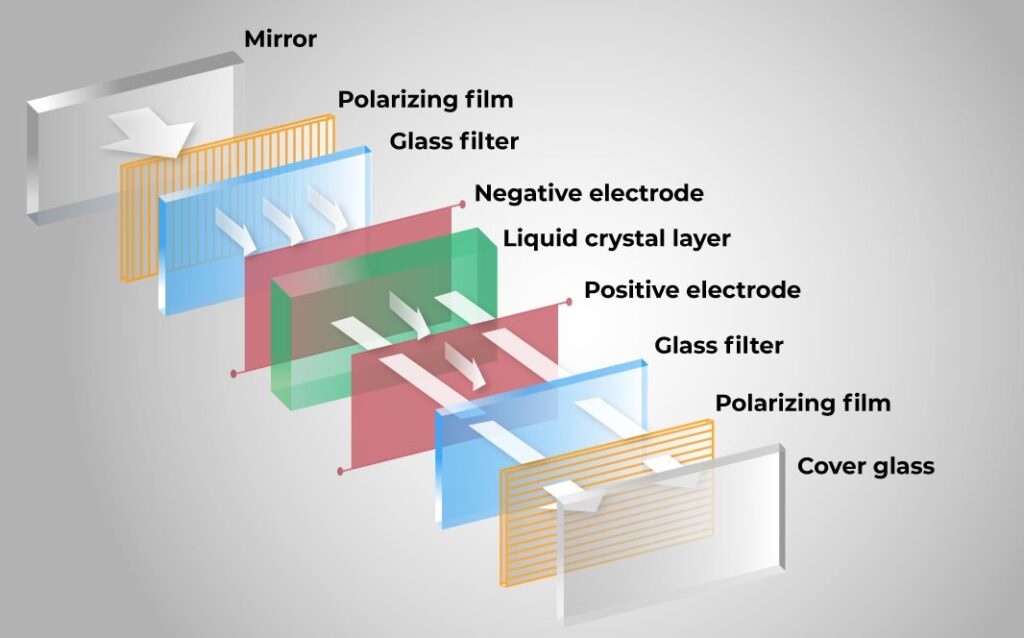
The liquid crystal that makes up an LCD is encased between two sheets of polarised glass (also known as a substrate), along with a backlight.
Beams known as polarised light are formed as a result of the process of polarisation, which limits the vibration of light waves to a single plane.
Liquid crystals require an external light source to function because they cannot create light on their own. Sets of polarised glass with liquid crystal materials sandwiched in between them make up an LCD screen. Whenever an electrical current is applied to the liquid crystal molecules and outside light passes through one of the polarised glasses, the liquid crystal molecules arrange themselves in such a way that polarised light moves from the first layer to the second polarised glass. This causes an image to show up on the display.
Electrical currents cause the liquid crystal molecules in the first layer of glass to shift and align, allowing the backlight to flow through. As a result, only particular intensities of polarised light (basically light waves) may reach the second substrate.
The RGB (Red, Green, and Blue) pixels that are crammed into the display use this light as their light source to combine to produce the image that is displayed on the screen.
However, there are other considerations than LCD technology that affect the image's quality.
What are the TYPES OF LIQUID CRYSTAL displays?
The types of displays that we are going to discuss under this head are:
The TN (Twisted Nematic) LCD may be produced most commonly and is utilized in a variety of industries for different types of displays. Due to its low cost & rapid reaction time compared to other displays, gamers utilize these screens the most frequently. The primary drawback of these displays is their poor quality, which also extends to their partial contrast ratios, viewing angles, and color reproduction. However, these tools are enough for daily tasks.
Due to some distinctive key features that TN displays offer, TN LCDs continue to have a loyal user base even as other screen types gain in popularity. One difference between TN LCDs and other TFT LCDs is their quick response and refresh rates.
Comparing IPS to TN displays, IPS LCD performs better in terms of contrast, brightness, viewing angles, and color representation. No matter the viewing angle, images on the screen maintain their clarity without being washed out or distorted. As a result, viewers are not restricted to looking at the display from a front-center position and may watch material on the screen from practically any angle.
IPS panels enable the creation of vivid, precise, and crisp pictures that can be seen from practically any angle.
Because they offer superior image quality, greater viewing angles, bright color accuracy, and difference, IPS LCDs are regarded as the best LCDs. The majority of users of these displays are graphic artists, and in certain other contexts, LCDs require the highest possible standards for picture and color reproduction.
Between Twisted Nematic and In-Plane Switching Panel technologies, the vertical alignment (VA) panels can be placed anywhere in the middle. In comparison to TN-type displays, these panels have greater quality characteristics and the best viewing angles and color reproduction. The reaction time of these panels is quick. These, however, are far more practical and suitable for everyday usage.
What are the APPLICATIONS OF AN LCD?
When it comes to the use and applications of LCDs, many different items include:

TVs and Monitors
Liquid crystal display (LCD) panels have gained popularity in the high-definition television industry because of technological advancements. Large flat panel LCD or Plasma displays are increasingly replacing traditional Cathode Ray Tube (CRT) televisions in the market as broadcasting technology advances from analog to digital television.
Although liquid crystal display television (LCD TV) is a new invention, other home furnishings like digital readouts, microwave timers, and personal computers often use liquid crystal displays for many years.
LCD projectors are available for organizations to use to show video, photos, or data like how the old overhead projector previously did, thus the technology is not limited to giant flat-screen TVs.
The most common computer display device, an LCD computer monitor, is another area where LCD technology is used. Customers frequently choose LCD monitors because of how little room the flat panel screen takes up.
The LCD has taken the role of the large computer screen, and all new computers now come with one as standard equipment. The benefits of purchasing an LCD monitor go beyond just its size and include the money you'll save because it uses so little of your power source to operate.
The viewing experience on liquid crystal display television (LCD TV) has significantly improved.
Camera
Images are shown on LCDs in digital cameras. It makes it simpler for you to determine if you got the shot just right or whether you need to try again. The LCD may be used as a live perspective, to study the images, and to provide menu options.
Among the LCDs' further uses are:
Industrial Applications
Over the past several years, the usage of digital displays has multiplied throughout multiple networks and sectors. The variety of uses for digital panels is limitless, from industrial LCD monitors to maritime and military activities. The Liquid Crystal Displays are perfect for indoor and outdoor applications in calm and challenging settings because of their distinctive features like brightness adjustment and infrared illumination.
Many indoor businesses and applications employ LCDs and industrial touch panels. For instance, they are utilized in industrial manufacturing facilities, arenas, stadiums, inside automobiles, and during the preparation and filling of food and beverages. They are also used at galleries and museums, as well as at kiosks and ticket booths. Surgical units, hospital carts, and telehealth systems all make use of LCDs as medical monitors.
PROS AND CONS OF THE LIQUID CRYSTAL DISPLAY (LCD)
The last few decades have seen significant advancements in electronic display technology. Cathode ray tubes (CRT) are no longer the industry norm. Nowadays, liquid-crystal display (LCD) technology is widely used in electronic displays like TVs, computer screens, industries, and smartphones. Let's examine the benefits and drawbacks of LCD technology in more detail.
PROS:
CONS:
CONCLUSION
The evolution of electronic displays has a direct relationship to the current history of liquid crystals.
Liquid-crystal displays (LCDs), have liquid organic material pixels and these days, LCDs are utilized everywhere and almost constantly. They are utilized in buildings like houses, workplaces, schools, factories, and even cars.
The blog we hope, "The Ultimate Guide to Liquid Crystal Display," should have been able to provide you with as much information as possible on LCDs.
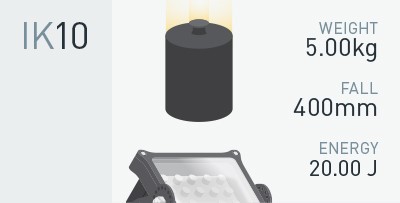

A touch screen is a type of electronic input and display panel. Using hand motions and fingertip movements, a user interacts with a computer, tablet, smartphone, or touch-controlled device by tapping images, manipulating objects, or typing text on the screen. The pressure-sensitive displays may be operated or interacted with either fingers or a pen.
To navigate a graphical user interface, touch screens are a convenient substitute for a keyboard and mouse. To avoid the necessity for touch-sensitive input, some gadgets also utilize touch screens with a network of infrared rays that detect a finger.
Talking about the uses of touch screens, today, touch displays are extensively utilized in consumer self-service kiosks, automated teller machines (ATMs), airline e-ticket terminals, retail stores, libraries, and fast-food establishments. The most popular method of input for mobile phones is undoubtedly touched displays.
IK10 Touch Screen is a screen with a 10 IK rating. Impact protection is rated using the IK scale. A higher number indicates a more durable product that can resist a bigger impact on a scale from 1 to 10. The impact type under test is not as powerful as a sledgehammer force. An international numerical system known as IK Ratings is used to categorize the levels of protection offered against external mechanical impacts. It offers a way to describe how well an enclosure can shield its contents from outside influences.
The "Charpy Pendulum" impact tester is a technique used to conduct the IK impact resistance test. To create an impact that is measured in Joules, a steel hammer is dropped from a specific height.
According to the resistance level rated, the product is given an IK code after the test. There are 10 different codes, numbered IK0 through IK10.
While, IK01 offers impact-resistant to 0.14 joules, equivalent to a 0.25- kilogram load that was dropped 56 mm above the surface being struck. IK10 protection offers protection against impacts of up to 20 joules. Equivalent to the impact of a mass of 5 kg dropping from 400 mm above the surface being struck.

It takes little energy to make one joule. A typical illustration of one joule is the amount of force needed to raise a little apple (100 g, or 0.1 kg) to one meter in height while defying gravity (9.81 m/s2, or around 10 m/s2). Although the units for torque and joules are the same (1 kgm/s2 = 1 Nm), torque is a vector quantity of force applied at a distance, whereas joules are scalar quantities (they have both magnitude and direction) of force applied through a range.
Speaking about the history of IK Level or Rating, IK ratings are related to the European standard EN 62262 for touchscreens, which is the same as the international standard IEC 62262 (2002). This is a global numeric rating for the levels of defense offered by electrical equipment enclosures against outside mechanical impacts. It offers a way to describe how well an enclosure can shield its contents from outside influences. The European Standard BS EN 50102 first defined the capacitive touch panel IK Code (1995, amended 1998). The European standard was given the new number EN 62262 after becoming an international standard in 2002.
A piece of electrical equipment must meet the requirements of Standard EN 62262 for its impact strength or resistance to external mechanical stress when subjected to certain shocks. The EN 62262 standard simply specifies the impact amount of energy; the EN 60068-2-75 specification contains details on the test circumstances and process.
IK10 Touch Screens offer the maximum level of protection against shocks and impacts, making them ideal for outdoor and industrial use.
While EN 62262 specifies how enclosures should be mounted during tests, the atmospheric circumstances that should exist, the number of effects and their allocation, and the volume, style, material, dimensions, etc. of the different kinds of hammers designed to produce the required energy levels, IK ratings assist in classifying products based on their resistance to effects by kinetic energy.
These touch screens have been thoroughly examined. The "Charpy Pendulum Test" is used to evaluate the screens' robustness. In the IK test, an impact object is dumped onto the test location from a certain height with a predetermined weight and form, and an IK grade is given to them as a result. The screen with the highest rating, IK10, protects against 20 joules.
For this reason, taking the IK rating into account when buying a touch screen for any application is crucial. Based on your usage and intended use of the touch screen, the rating gives you an estimate of how much protection you need.
The energy gains every level more than doubles starting with IK class IK07. The demands on glasses are particularly high due to the exponential rise in impact resistance, which sets the highest possible demands on the material and integration process. Every little thing matter, especially in the particularly robust area of IK10 where the impact energy is from 20 joules. For the glass to have the best impact resistance, proper integration is a crucial need.
In essence, as little as feasible yet as much as essential, although sometimes, the issues are more complicated than the simple observance of a standard.
The crucial query is, "What else do you want to accomplish?"
We at EAGLETP are happy to help you resolve these problems and can swiftly and expertly offer you a cost estimation.
You should get an industrial touchscreen based on your demands as well. The touch screen can provide you with pertinent features and accommodate your job demands in this method. Strong functional and technical advantages underpin industrial touch screens.
Due to the need for toughness and durability in industries, the screen must be robust in addition to having excellent features. IK rating must be considered when discussing touch screens used in industrial settings. You can determine the precise amount of pressure a touch screen can withstand by looking at its IK rating. It is now simpler for you to select the ideal IK touchscreen for your industrial task. The display is often covered in a 6mm or 8mm layer of toughened glass to boost its impact and resistance to abrasion.
Toughened glass can be added to industrial screens in open-frame, panel-mount, and chassis-mount formats to increase IK protection and safeguard the asset. The severe circumstances they are used in, not vandalism, are what cause this damage. These displays are not just used in factories; they are also used in public spaces, such as ATMs and vending machines, which often feature a hardened open-frame display set behind a unique chassis.
Since IK10 provides exceptional protection against pressure up to 20 joules, and since we are aware that industrial works call for certain rugged and durable screens. IK10 touch screens offer excellent protection against a variety of high-level hits and shocks encountered in regular work because of their exceptional shock resistance.
The following list outlines the basic strategies to raise impact rating:
IK rating translates roughly to "impact protection." The touch screen may support a greater weight depending on the code of the IK rating.
Impact resistance works to guarantee that touch screens may be utilized in challenging conditions and provide excellent longevity. IK ratings range from 1 to 10, with a higher value suggesting a product that is more durable and can resist a bigger impact. The impact type under test is not as powerful as a sledgehammer force. IK10 can withstand 20 joules—the force of 5 kg being dropped from 400mm—without being damaged.
The level of protection offered by displays or touch screens against external mechanical damage is measured using the IK rating (Impact Protection rating). It establishes a product's resilience against impact damage.
A powerful, durable illumination is essential to provide a successful, risk-free operation in industries or at work where applications frequently involve large equipment, which raises possible dangers.
You must pay close attention to how the product is applied and if it has been subjected to demanding usage and effects. If you need a performance that lasts longer, make sure you research to find the best quality-to-cost ratio for your goods. It is crucial to take into account the environment in which the product will be used. Together, these elements will affect how well your product performs.
Eventually, if you want to get a long-lasting device that safeguards your integrations, you must select a touch screen with an IK10 rating, which is the maximum degree of IK rating.


Creating smart cities includes building smart houses. Countries all around the world have worked tirelessly in recent years to promote smart cities. A fascinating technical development that can significantly improve people's quality of life is the development of smart houses. Several technical facets, such as big data, mobile networks, cloud computing, the Internet of Things, and even artificial intelligence, are involved in the creation of smart houses.
A Smart Home System includes smart home devices. The modern family is now living in a smart house, and the innovative and practical touch display central control has taken the place of the conventional mechanical switch. One of the most important smart home devices is the smart switch touch display. Usually, most people don't give light switches the slightest amount of attention, but if you opt to equip your house or business with smart switches, that may change. These cutting-edge devices have the potential to be integral parts of a strong network of connected smart home equipment. Modern touch switches are replacing outdated switchboards because they not only improve the aesthetics of our homes but also make using them much simpler and safer. These contemporary touch switches do more tasks and survive longer than conventional ones since they are constructed without any moving components.
In the following article, “WHAT DOES A SMART HOME LOOK LIKE? – Know all about a smart home system and how it works”, we will be discussing everything about a smart home system with smart switch displays.
The switch to smart homes has the power to completely alter how we live. All of your gadgets may be controlled by the little, discrete box that you can connect to any outlet in your house.
Convenience is one of the most significant advantages. Who wouldn't prefer using their smartphones to manage their house lights to getting up from the couch and flipping switches, after all? With a smart switch, life is simpler than ever whether adjusting or turning on lighting fixtures. Beyond just being convenient, there are several benefits. By employing motion sensors and scheduling to ensure that your lights aren't on when they're not needed, you may save money while also enhancing home security because having lights on can deter burglars. Finally, the superior design gives smart switches a sleeker appearance than conventional switches.
Your smart lights may be automated with the help of a smart switch. You may set your lights, for instance, to turn on and off at particular times throughout the day. Additionally, you could use a smart switch to program your smart lights to simulate availability or set up scenes that adjust a room's lighting levels based on specific activities like reading or watching TV.
By enabling you to manage your lights and other appliances using your phone, voice commands, and much more, a smart touch switch will spruce up your home. Although moving to smart appliances is more expensive upfront than staying with regular ones, it ends up saving you money.
The touch screen is perhaps the most engaging and natural of all user interfaces since it puts all the necessary information at your fingertips and is structured and presented in a way that's easy to understand.
Touch screens offer an intuitive user interface that is constantly available and ready for you to engage with your house. There is no need to wait for a program to load or to power up. The electronic system in your home is immediately under your control.
As a result, smart switches with touch screens or displays are better than regular smart switches with no screen.
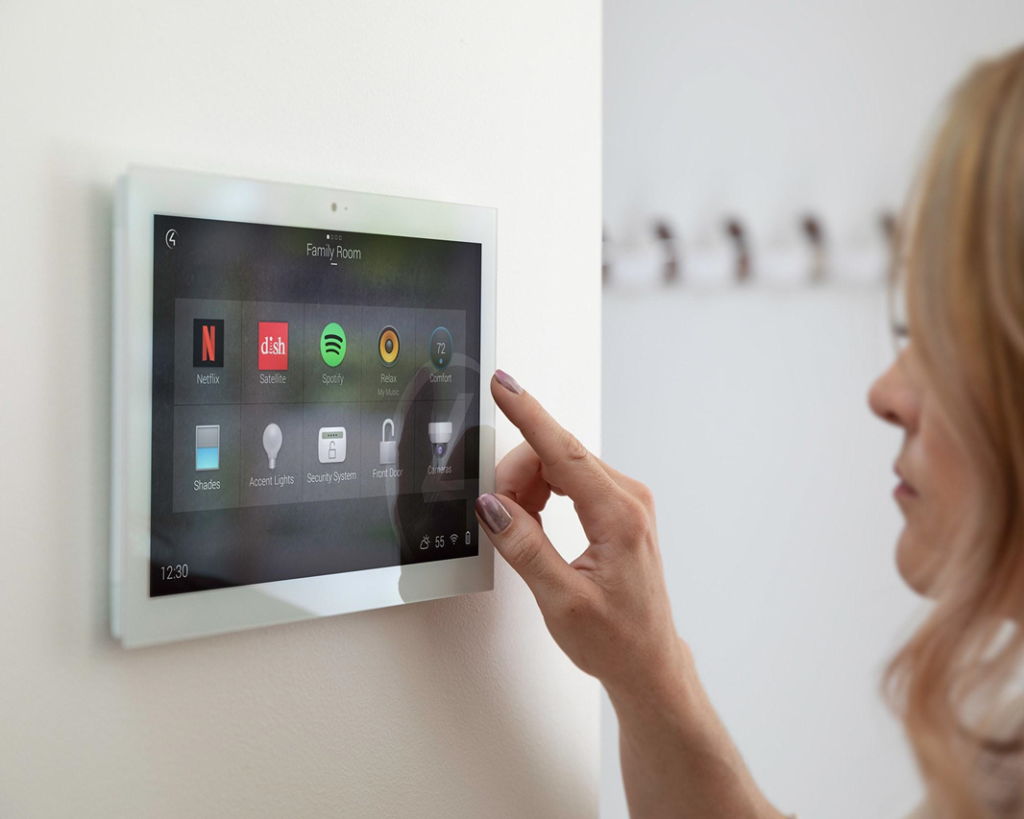
There are three types of smart switches currently in the market,
Starting with the Standalone Smart Switch – Although you may manage them via an app on your phone, this smart home switch operates separately from your home WiFi network. It can only operate the same switch's lights or appliances, though.
Hub-based Smart Switch – Your router's central hub serves as the processing and networking center for the smart switch. They are manageable from anywhere using a phone app.
The Standalone WiFi-enabled Smart Switch, which can be used with or without a hub, is the last one on the list. To use it, you must first connect it to your home WiFi network.
A smart display is a gadget that links to home automation systems and includes an integrated touchscreen. Any light or appliance in your house is compatible with a smart switch. As a result, it can switch almost anything on or off, including exhaust fans, ceiling fans, and independent A/C units.
The switch LCD not only makes it possible to control the lights, but it also has several additional benefits. A smart switch display can control your lights' brightness, color, and color temperature as well as cool the room by turning on or off ceiling fans or by setting up scenes. Control window curtains, presentation screens, and other automated features.
The displays and cameras are a step up from a cheap speaker or pricey tablet (on some variants). Smart displays may serve as hubs for your smart home equipment, such as security cameras and light bulbs, allowing you to voice-control anything and easily access video feeds.

A Smart home system must include a smart thermostat. A smart thermostat simplifies life. To remove the cold from the fall air, you may program the thermostat to turn on the heat first thing in the morning. Alternatively, you may program your air conditioner to turn on a few hours before you go home from work. Most smart thermostats link to an app on your phone through Wi-Fi. You can set up automation with other smart devices, plan when your heating or cooling comes on, control the temperature of your house from anywhere, and more with the app. Some programmable thermostats may arrange heating and cooling schedules using a touchscreen display even while they are disconnected from an app.
You can integrate your smart thermostat into automation with other smart devices if you have a smart home setup. Create automation to, for instance, decrease the temperature when you go to bed, switch off your smart lights, and turn on your home security system.

A linked hub, such as a smartphone, tablet, laptop, or game console, provides access to all of the appliances in a smart home. One home automation system may operate door locks, televisions, thermostats, home monitors, cameras, lights, and even appliances like the refrigerator. The user may set time schedules for specific changes to take effect using the system, which is installed on a mobile device or other networked devices.
Self-learning capabilities are included in smart home appliances, allowing them to figure out the homeowner's schedules and make modifications as necessary. House owners who live in smart homes with lighting control can lower their electricity usage and save money on energy-related expenses. When motion is detected in the home while the owner is away, certain home automation systems send them an alarm.
Intelligent Switch Display Lighting items now improve the capabilities of homes, sometimes with the use of a mobile phone, tablet, or specialized remote dedicated to a device. Lights can be turned on and off, put on a schedule, or programmed to vary according to the hours of dawn and sunset. Lights may frequently be configured to change based on motion, just as some more traditional items. Wi-Fi-enabled smart lights may talk with one another and provide measurements or data to your phone.
The installation of a smart home technology system offers convenience to homeowners. Instead of utilizing many devices to operate their appliances, thermostats, lights, and other features, homeowners may control them all with just one, often a smartphone or tablet, or a touchscreen display.
A smart kitchen is what you need in your smart home. In order to utilize a smart display in your kitchen or living room, it should have a screen that is visible from a distance and speakers that can provide clear, enjoyable sound across the area. The greatest smart display offers all the features of the best smart speakers, including excellent speakers for viewing videos or listening to music in the kitchen.
With the aid of technology and innovation, smart houses facilitate tasks. Smart homes have altered how people do things, use energy, and connect with their home items, whether it be using their phones to operate programs or scheduling products to complete activities at certain times.
When specifically talking about the Smart Switch Display, controlling appliances is a smart switch's main function. You can control your energy usage and save money. An inexpensive technique to aid in the prevention of dangerous electrical fires is to install a smart switch.
More control over your lights throughout the day is possible with smart switches. A smart switch can help you save energy expenditures if you own a house or company that is subject to climate extremes by adjusting lighting levels when temperatures increase and decrease.
The aforementioned article, we hope, “WHAT DOES A SMART HOME LOOK LIKE? – Know all about a smart home system and how it works”, has provided you with sufficient information regarding the intelligent home system and smart switch displays.
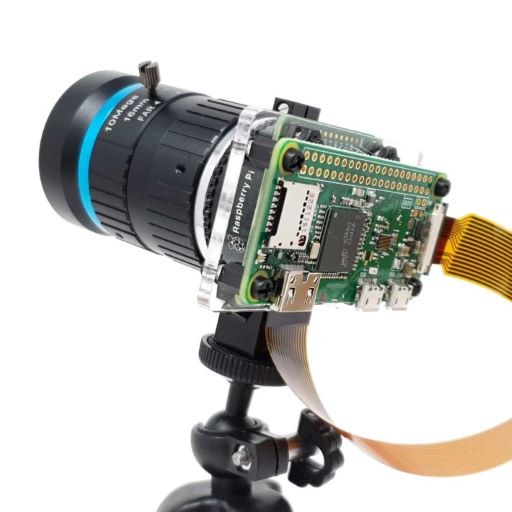
The Raspberry Pi is the name of a series of single-board computers created by the Raspberry Pi Foundation, a UK organization that aims to educate people in computing and make computing education more accessible.
The Raspberry Pi was introduced in 2012, and various revisions and modifications have since been developed. The original Pi had a single-core 700MHz CPU and just 256MB RAM, whereas the current edition features a quad-core CPU that clocks in at more than 1.5GHz and 4GB RAM. The Raspberry Pi has always been priced around $100 (typically about $35 USD), with the exception of the Pi Zero, which costs only $5.
The Raspberry Pi is a low-cost computer that runs Linux. It also has GPIO (general purpose input/output) ports that allow you to manipulate electronic components for physical computing and explore the Internet of Things (IoT).

The Raspberry Pi Foundation seeks to put the computer and digital fabrication power in the hands of people all around the world. This is accomplished by providing low-cost, high-performance computers that anyone can use to study, solve issues, and have fun. It offers outreach and education to assist more people to gain access to computing and digital manufacturing—it creates free materials to help people learn about computing and making things with computers, and it also trains educators who can help others learn.
Although Code Club and CoderDojo are part of the Raspberry Pi Foundation, they are platform-independent (not bound to Raspberry Pi hardware). The Raspberry Pi Foundation promotes these clubs and works to expand the network around the world so that every youngster can learn about computing. Similarly, Raspberry Jams are Raspberry Pi focused events that bring together individuals of all ages to learn about Raspberry Pi and share ideas and projects.
When the Raspberry Pi initially hit the market in 2012, one of its creators' key goals was to build a gadget that would encourage children (but not only children!) to learn programming. It's an incredible device for anyone who wants to start their journey in the great world of electronics - regardless of age, users may learn new skills and explore the interesting possibilities it provides. There are already various programs available to assist you to learn how to program with your Raspberry Pi, the most popular of which is Scratch.
Because of the simple "block-based" architecture, rookie programmers can avoid typing long and intricate chunks of code: instead, they just place individual commands in the appropriate locations and can preview the code at each level. What a fun and quick method to improve your programming skills!
Some individuals use a Raspberry Pi to learn to code, while others use it to learn to code circuits for physical projects. The Raspberry Pi is well-liked in the open-source community because it lets you create your own home automation projects rather than depending on a proprietary closed system.
Although it is just a small machine, it has a number of applications. Following are some of the amazing uses of Raspberry Pi:
A different software creates another purpose for the Raspberry Pi camera module, which takes movies. This is possible by capturing single frames with a time delay. A portable battery solution is also required, and a tripod might be employed. To keep the device stable, a smartphone tripod is recommended.
Raspberry Pi boards, with their basic credit card-sized DIY computer kits, have changed the electronics hobby sector. Today, practically anyone with basic electronics assembly and coding expertise can set up their own Raspberry Pi system.
All you need to build your own little computer is a Raspberry Pi board, a display unit, and a keyboard (optional). If you can locate the ideal touch screen, you can build your own fantastic DIY computer.
The following factors are used to rank and rate these screens:
There are many Touch Screen LCD displays available online. You may find reliable products at: https://www.eagletp.com/products/accessories/
Raspberry Pi is a versatile and useful computer. It is depicted in the preceding use cases. Students of computer science, electronics, and other related disciplines should devote time to studying this unique skill; they will enjoy it while also becoming quite proficient in the principles of computer programming and hardware technology. A good understanding of raspberry pi can help you win a number of enjoyable projects, activities, and college-level competitions.
Other Raspberry Pi applications include security cameras, digital photo frames, smart TVs, network monitoring tools, and home automation systems.
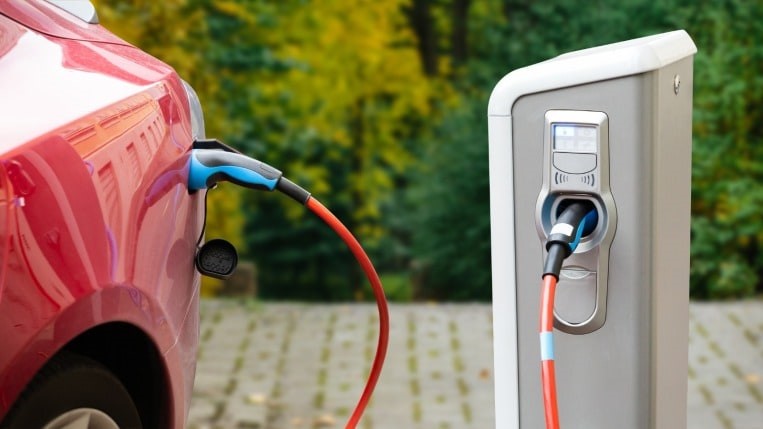

Introduction
Production of electric vehicles is becoming more and more popular, and its market share is expected to rise sharply. India's GDP is expected to rise by an astounding 25% by 2022.
The best part is that EVs can cut oil supplies by $60 billion by 2030 in addition to reducing pollution. Presently, 82% of India's oil needs are met by imports. Therefore, it is obvious how beneficial a reduction in import costs will be for the Indian economy.
The nations' charging infrastructure will be put under further stress as the usage of EVs increases. To produce dependable, secure, and user-friendly solutions, businesses have been collaborating with both established and emerging industry participants.
EVs require chargers for charging. To here, check the Top 10 EV Charger Manufacturers in the world.
To track the flow of electricity to the car, a charging station often has digital processing and current sensors. A human-machine interface (HMI) can occasionally be found in a charging station to offer a more user-friendly graphical user interface.
Utilizing touchscreen display EV chargers is one approach to cutting back on HMI expenses. Also, given that consumers engage with the display the most, it is one of the elements that may help businesses stand out from the crowd.
Since the entire globe is currently converting to capacitive touch technology, touch displays for EV chargers are quite popular. It makes perfect sense considering how accustomed we are to being "in contact" with our cell phones practically constantly.
With a forecasted compound annual growth rate (CAGR) of 30.6% from 2022 to 2030, the size of the worldwide market for electric car charging infrastructure is projected to reach USD 19.26 billion in 2021. The requirement for the use of electric cars has been prompted by the growing levels of carbon emissions and other dangerous substances resulting from transportation. As a result, there is a growing need for an electric vehicle (EV) charging infrastructure in both business and residential settings.
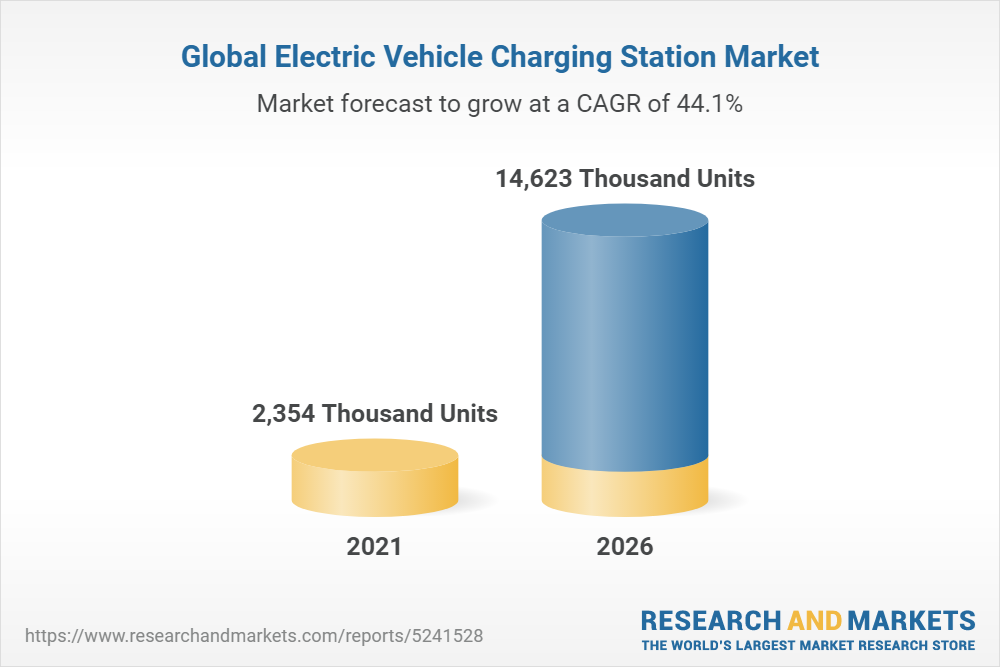
EVs are anticipated to continue receiving a significant amount of attention as governments around the world concentrate on building a stronger and more resilient economy to recover from the epidemic. For instance, California is developing in the United States with ambitious goals for electric vehicles, which is anticipated to have a favorable effect after the epidemic and spur market expansion.
Thus, electric car sales have reached all-time highs in 2020. Notwithstanding the COVID-19 epidemic, about 3 million electric cars were marketed worldwide in 2020. The leading EV producers, including Ford, BMW, Volkswagen, Tesla, and General Motors, are expanding their expenditures in the creation and expansion of production facilities. As a result, over the projection period, it is anticipated that increasing EV sales would fuel EV charger demand globally.
With this analysis and introduction, let us now get into our topic which is “Top 10 EV Charger Manufacturers in the World”, read till the end to know about the best and the big shots in the market.

Tesla, designs, develops, produces, and sells high-performance entirely electric motors as well as energy-producing and storage systems.
In addition to offering these other auto manufacturers electric powertrain components, the firm owns and runs a sales and assistance network.
Tesla is the owner of networks that develop effective energy-generating and storage technologies. But aside from that, Tesla is most recognized for being a top-notch producer of electric cars and chargers.
For a Tesla, you have two options for charging stations:
Tesla's disadvantage is that the company has never provided charging stations with screens; instead, it has always depended on its smartphone app to keep track of charging sessions.
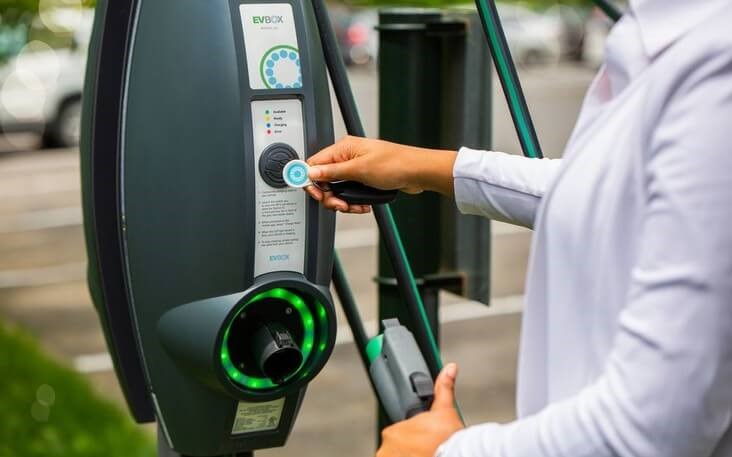
EVBOX positions itself as the complete answer to giving you the greatest support and tools for your electric car. This organization offers its clients top-notch hardware, software, and business charging solutions. One of the biggest EV charger manufacturers, it also has a sizable network of charging stations.
For use with electric and hybrid automobiles, EVBOX creates, produces, and markets charging stations. The firm provides household electric car chargers, wall versions with fixed wires, commercial charging solutions, and charging columns.
Various s EV Chargers that are an option at EVBOX are as follows:
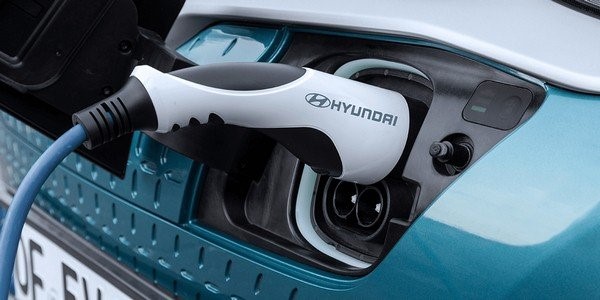
Next up on the list is Hyundai. Hyundai Motor Company, sometimes known simply as Hyundai, is a global South Korean automaker with its headquarters in Seoul. In 1967, the Hyundai Motor Company was established.
To create a wireless method for charging electric vehicles, Hyundai and Kia have cooperated. To attain the 5,000 connections specified above by 2025 in Korea and other countries, Hyundai and its partners plan to add 2,500 sites with two charging connectors per station shortly. Then, this will be included in other roaming infrastructures.
Hyundai offers Home Charging as well as Public Charging. Also, you may use the Charge MyHyundai app to locate the closest Hyundai charging station in the UK because Hyundai has more than 15,000 wireless charging outlets there.
Hyundai EV charger is incredibly user-friendly; because of the big touch displays built into the charging device, which show charging time, power, and the amount of charge left, drivers have complete and intuitive control over when to cease charging.

Schnieder offers a variety of eMobility solutions, including EV Field Services, EV Energy Management Software, and EV Charging Stations. Their eMobility solutions may be employed in a wide range of settings, including homes, workplaces, and fleets, enabling the transition to a net-zero future.
One of the broadest selections of EV charging solutions is provided by Schnieder. Electrics are the focus of this huge corporation.
German design and production are among the Schneider EV Link's standout qualities.
According to Schneider Electric: it provides,

By establishing and managing EV charging infrastructure internationally, Blink is facilitating the uptake of EVs.
To make electric car charging available, they have constructed the EV infrastructure. Since more than a decade ago, it has been our exclusive area of attention.
Blink continues to build the charging infrastructure necessary to satisfy the expanding requirements of EV drivers thanks to industry-leading technology and a wide network of public charging stations. With its wide range of products, Blink offers the most cutting-edge technology available. Through our ingenuity and fervor, they are advancing the industry.
With its large LCD display and quick level 2 charging station, the Blink Vision IQ 200 is built for maximum effect in high-traffic areas.
Up to 80 amps of output per charger can draw EV drivers, and an eye-catching LCD display that can show both static and moving advertisements can engage customers. The ideal point-of-charge advertising solution is Vision IQ 200.
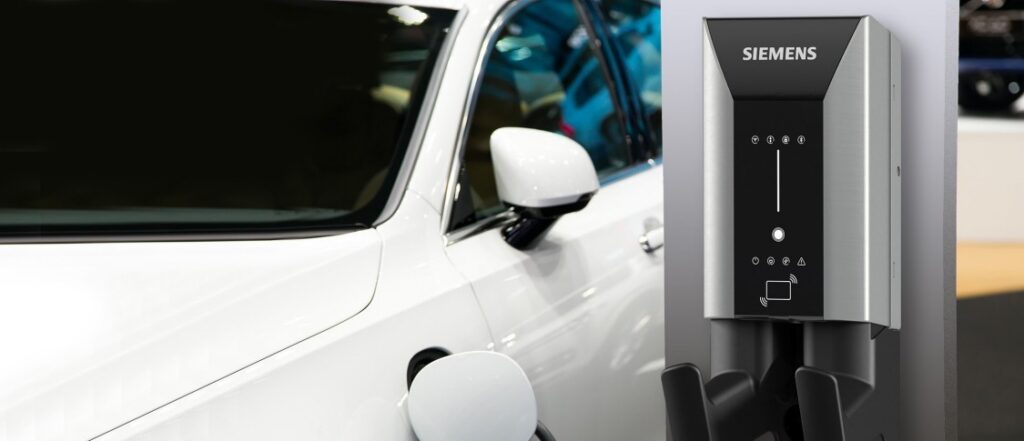
The standard is electromobility. Siemens is working together with OEMs, utilities, fleet operators, businesses, cities, and end users to make it a reality. Its contribution consists of more than simply devices; it also includes comprehensive solutions for electromobility that bring together years of experience, cutting-edge software, and high-performance products.
Siemens offers a comprehensive solution to the design, construction, and management of eMobility charging infrastructures, giving you 0the freedom, your expanding organization need.
In the Asia-Pacific area, Siemens has debuted the SICHARGE D public rapid charger. The User Interface (UI) and Service Design of the SICHARGE D have won the iF DESIGN Awards. The 24-inch inbuilt changeable EV charger display, which Siemens claims may be used for uses "beyond interacting with the charging process" like digital menu boards, information kiosks, or outdoor advertising, is the device's key selling point.

To provide you with the drive to customize your charging solution for your life, fleet, business, or community as your world transitions to electric, BP Pulse promises to rely on its more than ten years of experience.
BP Pulse, which has more than 9,000 public stations and 3,000 ultra-fast charging points, is the largest electric car charging network in the UK. Additionally, for more than ten years, this business has provided thousands of customers with automobile charging stations. BP Pulse also offers a user-friendly EV charger Display.
You may be sure that BP Pulse will only provide you with top-notch services. In addition to offering public charging stations, this business also sells home chargers for electric vehicles.
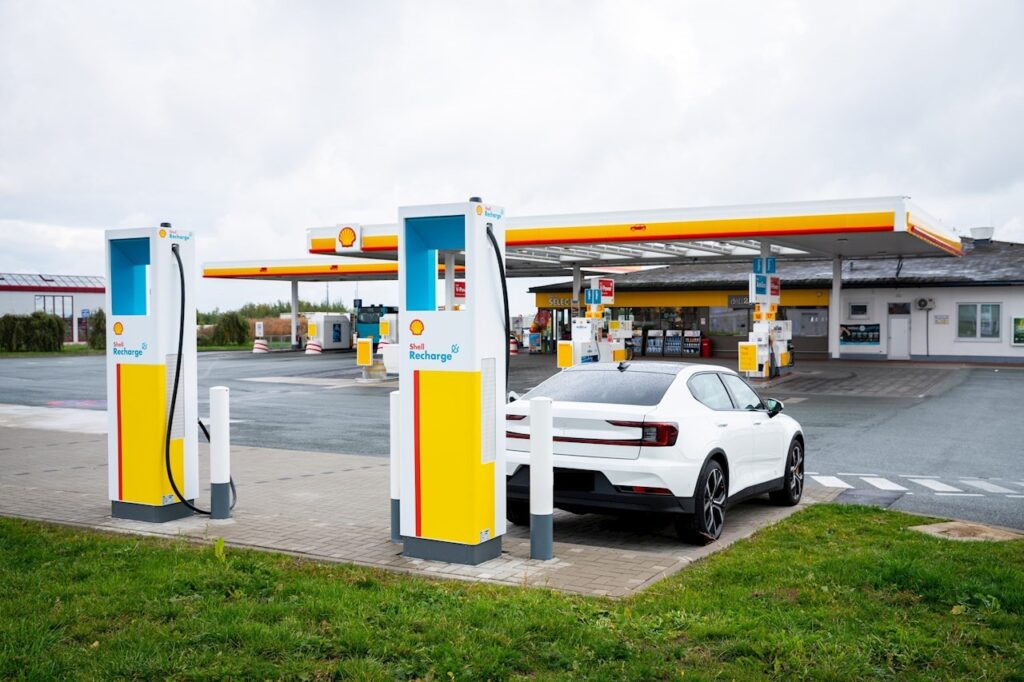
As one of the biggest energy providers in the world, Shell has contributed to daily commutes for well over a century. Their current goal is to grow into one of the world's leading producers of electric charging solutions, satisfying consumer demand at home, at work, or while traveling.
By 2025, Shell aims to run more than 500,000 charging stations. Currently, they run about 90,000 electric vehicle charging stations in residences, workplaces, Shell retail locations, and other locations. They also presently provide access to over 300,000 more charge stations via our roaming networks.
However, Shell is well-known around the world for being a significant oil company. But it has also just started selling Shell Recharge, which is a car charging station.

Based in Campbell, California, ChargePoint is an American provider of infrastructure for electric vehicles. The technology utilized in it is produced by ChargePoint, which also runs the biggest online network of individually owned EV charging stations operating in 14 countries.
ChargePoint provides a comprehensive package of hardware, software, and expert services to assist you in managing a best-in-class EV charging program. One of the best and most established EV charging networks in the world.
With more than 20,000 charging stations, ChargePoint is the biggest and most accessible electric vehicle (EV) charging network in the world.
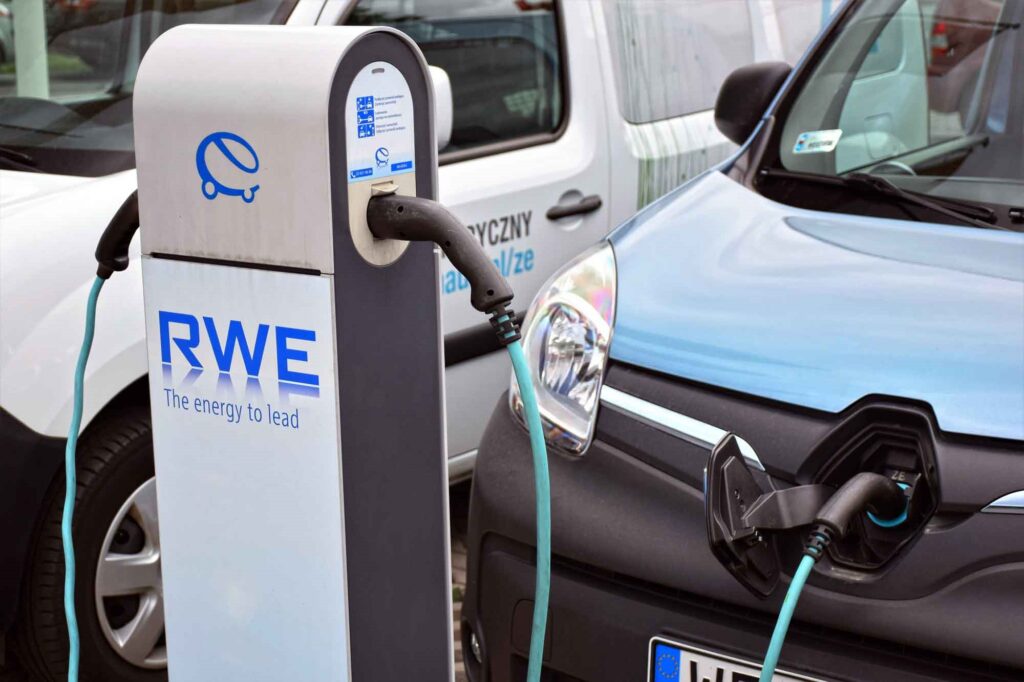
German global energy corporation RWE AG is based in Essen. It produces and exchanges power in the Americas, Europe, and Asia-Pacific.
For more than 120 years, RWE has consistently provided power to individuals and businesses, day and night. Many of us consider electricity to be a given. In addition, it may always be pulled out of our sockets. And we can because RWE and other electricity producers make sure it does. Sustainability and decarbonization are essential elements of our company strategy. Our goal is quite clear: to become climate neutral by 2040.
Additionally, through a relationship with Daimler, RWE is now able to provide a range of electric chargers for use in both public and private settings.
The firms listed above are among the world's suppliers of EV chargers or charging stations. We hope that this extensive list was useful to you. All of the businesses provide a variety of sustainable and renewable energy options.
Thus, here is a list of the Top 10 EV Charger Manufacturers in the World.


If you own a two-wheeler vehicle or are thinking of getting one, then you should know the importance of LCD displays for two-wheeler vehicles. The motor, LCD display, and battery make e-bikes different from traditional ones. The vehicle display system is one of the essential components of any the ebike. The LCD display for ebike is not just a conventional speedometer. It keeps track of all the major vehicle metrics, like battery, speed, mileage, lights, pedal assist, power mode, and many more while riding.
And it shows all the stats or information on the display screen. When transitioning from traditional bikes to ebikes, the LCD displays might look confusing to new users at the start, but when you learn and use it regularly, you will get to know how simple it is for new users. LCD display for ebike is primarily available in TFT display. Two-wheeler LCD displays are available in different sizes, screen resolutions, and features.
This guide will also help you to select the right and best touch display for two-wheeler vehicles, including ebikes, e-scooters, motorcycles, etc.
What Information does an E-bike Display Provide You?
The e-bike displays provide a wide range of information about the vehicle on the screen. It can also differ in different display systems. But the most common information shown on most of the LCD displays are:
The e-bike display helps track the bike's performance and make informed and timely decisions. All the two-wheeler LCD displays significantly impact the rider's safety and comfort. There are several sizes, screen resolutions, and functions for two-wheeler LCD displays. You may improve the performance of your two-wheeler by selecting the ideal LCD display for it. When purchasing an LCD display for an e-bike, you should always keep all these factors in mind.
The next factor to consider when selecting the e-bike display is to check the sunlight or low light readability level of the LCD display. It's essential that drivers can see the displays well in various lighting situations, from brilliant sunlight to pitch darkness. Because according to a survey, the ridership of e-scooters, e-bikes, motorcycles, etc., is at its peak in the afternoon time, so the LCD display of the ebike should have high readability and high brightness.
All the two-wheeler vehicles are used outdoors, going through different temperature ranges. Typical temperature ranges from -40°C to around 60°C. Ebike displays are exposed to a variety of temperatures and weather conditions, including heat, cold, rain, snow, and strong winds. Therefore, always consider the display's performance over a wide range of temperature ranges when choosing the touch display for your ebike. Touch displays for two-wheelers should be completely waterproof, high and low-temperature-resistant, moisture-proof, and dust-proof.
When selecting the LCD display for ebike, always make sure to get the display that provides high-level image quality. There is a high demand for displays with high resolution, high contrast, and high color-gamut properties due to the transfer of superior display technology from consumer electronics to automobiles.
As you know that all two-wheeler electric vehicles like e-bikes, e-scooters, etc. run on batteries, and their battery levels are limited due to their sleek and slim design. So it is better to get the LCD display for your ebike having a low or minimal total power consumption. The ebike display with high power consumption can affect the battery level and create problems for the rider while driving.
Drivers must have access to crucial vehicle information from displays without being distracted. The glare or reflection in the display can cause distractions for the driver, which can result in severe accidents. So always select the LCD display with an anti-glare or less reflection feature.
The TFT LCD displays for two-wheeler vehicles are available in different shapes, sizes, and dimensions. You can select the display size according to your need and compatibility with your vehicle. The screen size plays a vital role in the resolution of LCD screens. It is always better to get a high-resolution LCD display for an e-bike.
The LCD display for ebike has both touchscreen and button functions. Both buttons and touchscreen displays can be utilized to operate the controls on the ebike display. Today, most ebike LCD displays have touchscreen capabilities, which riders mostly favor because they look nice and are simple to operate. The ebike's button controls give the two-wheeler vehicle a classic, vintage appearance. The ebike displays have a touchscreen panel or a button panel that can be used to access and operate every feature.
Always make sure to get an ebike display from a reputed company. They will provide you with the best customer support and assistance. Good customer support or warranties can help extend the display’s life. It is also an important factor that you should consider or keep in mind while selecting the LCD displays for ebike because you can need help or information regarding the display usage anywhere and anytime.
Nowadays, TFT touchscreen LCD displays are used in almost every two-wheeler vehicle, like ebikes, e-scooters, motorcycles, etc. There are many benefits of using LCD displays for two-wheeler vehicles.
One of the main benefits of using ebike displays is that it provides complete information and stats about the vehicle on the screen. The rider does not have to keep looking at different vehicle parts while riding. You get all the information about the two-wheeler in one place. It shows speed level, battery level, watts usage, time, date, temperature, pedals or gears, etc.
As all two-wheeler vehicles are used outdoors, so LCD displays are completely waterproof, dustproof, moisture-proof, and temperature resistant. All the ebike displays work fine outdoors when exposed to different temperatures or weather. The two-wheeler owners can ride their vehicles without worrying about the display getting damaged or faulty in extreme temperatures or weather conditions.
In high-quality ebike displays, you can find USB ports installed on the display. It helps you charge your electronic devices like mobile phones, music players, and cameras while driving your ebike. It is one of the essential features required by the riders. You don’t have to worry about the low power issues in your electronic devices while riding your ebike because now you can fully charge them from anywhere and anytime when traveling on your two-wheeler.
Traditional two-wheeler vehicles with no displays can sometimes become dangerous because the rider has to keep looking at different parts of the vehicle to get information while riding. It distracts the rider from the road. But touch displays for two-wheelers provide all the important and related information related to the vehicle on the screen in front of the rider. It makes riding more safer and more comfortable.
The two-wheeler touch displays help track your vehicle’s performance. The LCD display can measure the mileage, speed levels, pedal shifts, and battery information. It is good to keep regular track of the two-wheeler's performance at different intervals. It is very useful for the riders to record their performance or routes.
Conclusion
The demand for touchscreen displays for two-wheeler vehicles is increasing rapidly, and companies or manufacturers are constantly working on R&D of their LCD displays for ebike to make them more feature-rich, stylish, and quicker. The ebike displays are one of the most critical components you need while driving the ebike. It provides detailed information about the vehicle in real time, which helps you in managing your vehicle and make timely decisions. There are many different factors that you should consider while getting an LCD display for your two-wheeler vehicle. Like sunlight or lowlight readability, performance in different temperature ranges, screen size, controls, power consumption, assistance, screen image quality, and many other factors. By keeping all these in mind, you can get a good LCD display for your ebike. The touchscreen displays for two-wheeler vehicles are very easy and simple to use. It also makes driving safer and more comfortable. There are many benefits of using touch displays for two-wheeler vehicles like you get all important information in one place, making riding simpler and more comfortable, helping track performance, being perfect for outdoor use, also allows charging devices, etc. This guide gives you all the information required to select the right LCD display for the two-wheeler vehicle.
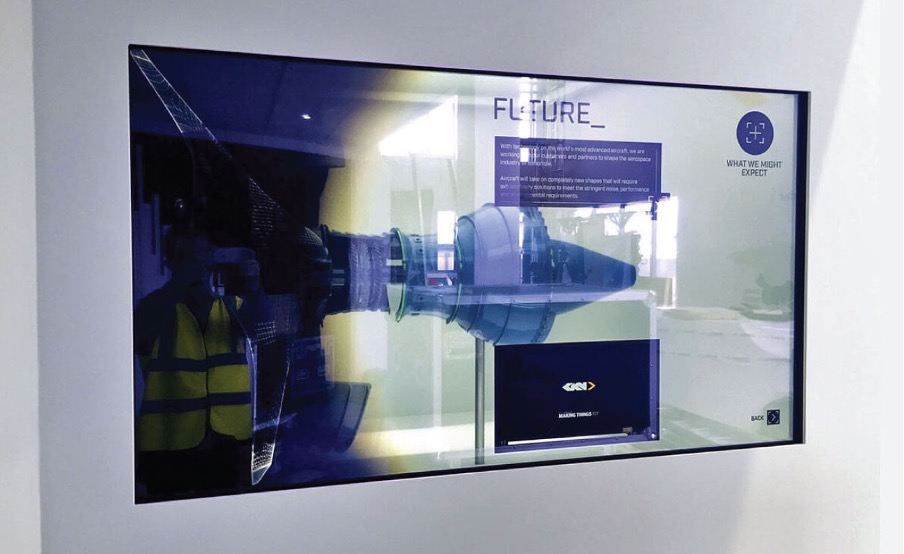

Introduction
A type of flat panel display known as an LCD (Liquid Crystal Display) operates primarily on liquid crystals. Portable electronic games, viewfinders for digital cameras and camcorders, video projection systems, electronic billboards, computer displays, and flat-panel televisions are all typical applications for LCDs. #Top 10 LCD Manufacturers in the World.
The demand for electronic components is rising quickly as a result of the evolutionary changes in consumer electronics over the past few years. LCD display modules utilize the liquid crystals' ability to manipulate light as an electrically modulated optical device or flat-panel display.
The need for LCD display modules is rising as more electronic products, including instrument panels, computer monitors, LCD televisions, indoor and outdoor signs, and aviation cockpit displays, are produced. Manufacturers of LCD display modules are concentrating on creating cutting-edge goods to draw in more consumers and boost income from the sale of displays.
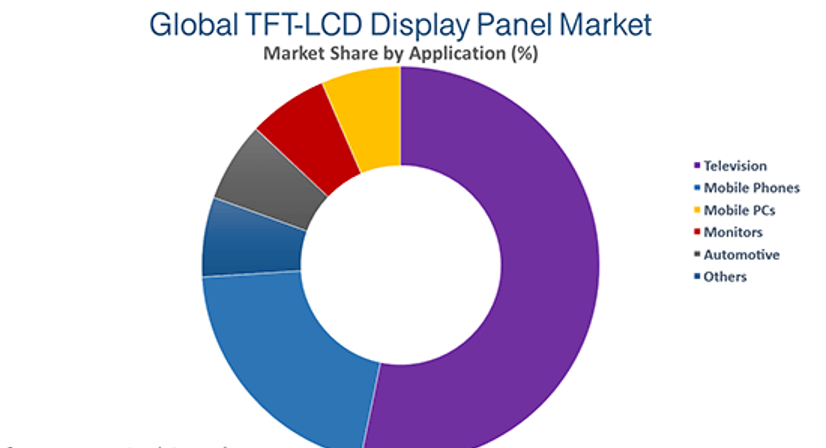
There have also been significant structural changes in the display sector worldwide. China, Japan, and South Korea are now the key LCD industrial hubs. The expansion of continental display manufacturers' manufacturing capacity will soon make mainland China the world's largest LCD-producing region. Additionally, local Chinese firms like BOE have recently surpassed LCD producers from Korea and Japan. China LCD businesses supplied 97.01 million square meters of TFT LCD in the first three quarters of 2020. Furthermore, China's LCD display makers anticipate quickly capturing 70% of worldwide exports of LCD panels.
Thus, considering the global LCD market, due to rising demand for touch-enabled displays, and low power consumption electronics, the LCD panel industry is one of the fastest-growing sectors in the economy. As a result, producers of LCD display modules are developing new products with characteristics such as backdrop display colors, character sizes, number of rows, and others, which are causing the LCD display module's integration to rise. With this analysis and introduction, let us now get into our topic which is “Top 10 LCD Manufacturers in the World”, and if you are also one of those who are searching about this topic, you are at the right spot.
INNOLUX
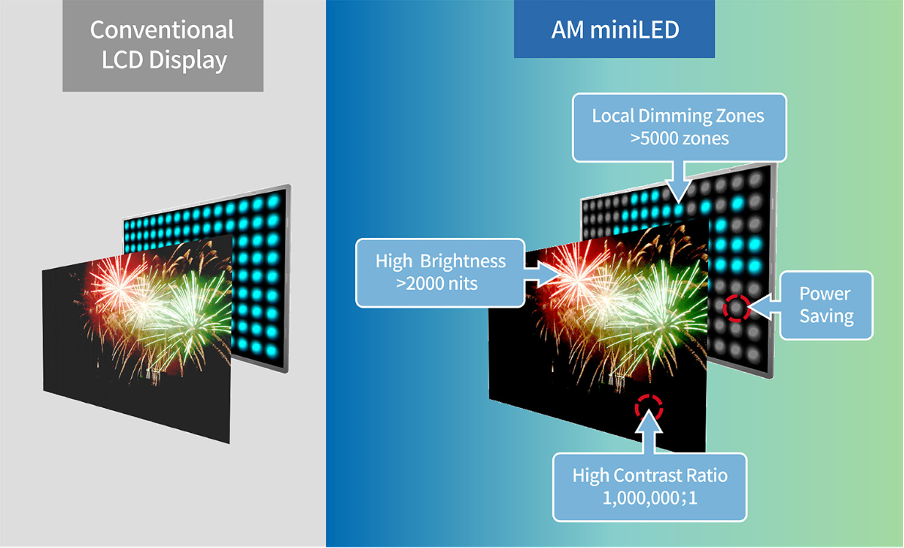
Despite having its roots in Taiwan, Innolux now serves businesses all over the world because of its strong global presence.
The top producers of TFT-LCD display worldwide are Innolux, formerly known as Chimei Innolux, and they were founded in 2003. Innovative and creative technology is used in Innolux's sophisticated display integration solutions, which provide a comprehensive spectrum of small, medium, and large LCD panels and touch-control displays.
Innolux is a TFT-LCD provider to information technology companies and consumer digital product producers worldwide, offering a comprehensive variety of TFT-LCD panel modules and touch panels, including TV panels, desktop monitors, laptop computer panels, and AV & mobile panels.
Toshiba, Samsung, Philips, LG, Sony, Panasonic, Sharp, Lenovo, HP, Broteko, Dell, & HDMIP are some of Innolux's biggest clients.

BOE is an IoT firm that offers smart goods and expert services for information interaction and human health. Its primary competencies include semiconductor display business, sensor and solution business, MLED business, IoT innovation, and intelligent health industry business and operational innovation.
Products from BOE are extensively utilized in a variety of applications, including digital data displays in vehicles, mobile phones, tablets, laptops, monitors, TVs, and wearable technology.
11 manufacturing lines are currently in use at BOE. A Gen 5 TFT LCD line and a Gen 8.5 TFT LCD line are two examples of this in Beijing. There are more production lines in Ordos, Chongqing, Hefei, Chengdu, and Hefei. The Gen 10.5 TFT LCD plant in Hefei, which has the highest generation in the world, began pilot production in October and will go into mass production in January 2018.
Beijing, Chongqing, Chengdu, Hefei, Ordos, Gu'an, Suzhou, and Xiamen are all home to BOE manufacturing facilities. Additionally, BOE has a sizable global network for marketing, sales, and service that spans the world's major continents, including Europe, America, and Asia.
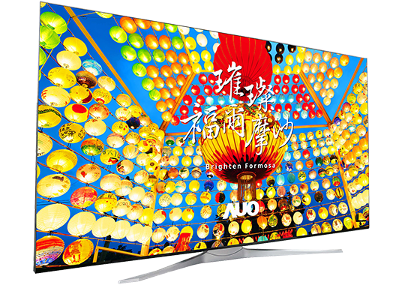
Founded in 1996, AUO employs 38,000 people worldwide spanning Asia, the United States, and Europe. Their display innovations continuously revolutionize human-technology interaction by drawing on their decades of industry leadership. Commercial and industrial-grade panels are used in the design and manufacturing process by AUO, which also has a wealth of display expertise. These factors enable AUO to produce highly dependable products of the highest quality with long life cycle support to ensure stable operation in challenging environments.
Lenovo, Acer, Asustek, Samsung, and other brands are among AUO's clients.

Sharp Corporation, which was founded in 1912, is credited with creating the world's first calculator and liquid crystal display, both of which are symbolized by the live pencil innovation that gave rise to the current corporate name. Sharp is actively entering new markets at the same time in an effort to raise societal and individual living standards.
The sector's first and largest 65-inch AQUOS LCD color TV was successfully created by Sharp Corporation at the time. The size of LCD TV screens was formerly thought to be limited to 45", yet size has been rising considerably, indicating that LCD technology will continue to advance.

Located in Kyoto, Japan, Kyocera Corporation is a worldwide ceramics and electronics producer. Kazuo Inamori established it as Kyoto Ceramic Company, Limited in 1959, and it changed its name in 1982.
Nowadays, the majority of Kyocera's goods are associated with the telecommunications industry. These products include semiconductor components, radiofrequency and microwave product packages, passive electronic parts, cordless smartphones, and networking devices, crystalline oscillators and interfaces, as well as optoelectronic items used in optoelectronic communications systems.
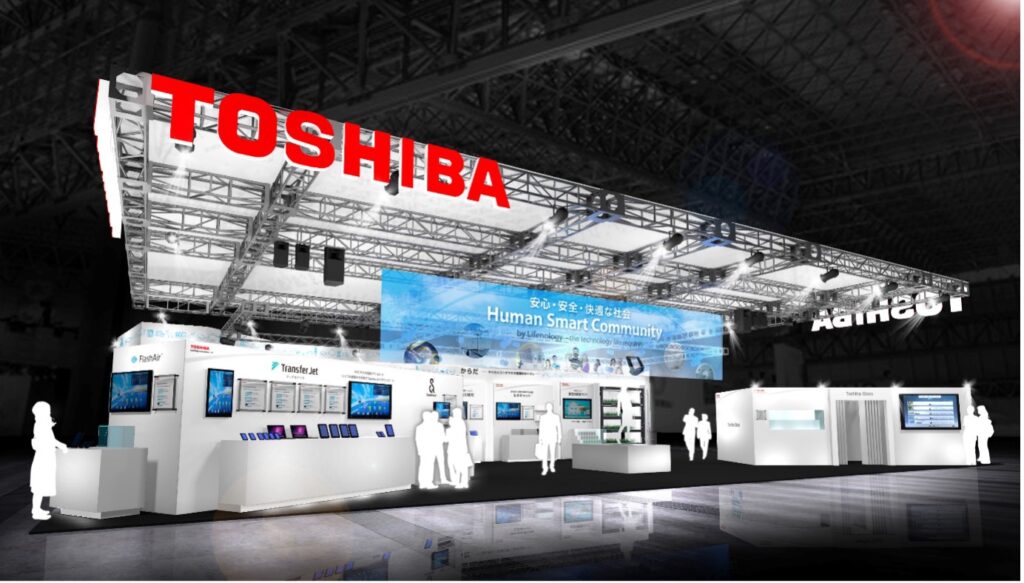
Toshiba, a household name in Japan and a technology corporation with a long history and several industries, has long been seen as a representation of the nation's technical might.
Toshiba creates a wide range of goods and services, including computer hardware, software, lighting, power plants, electronic goods, domestic appliances, and much more.
From introducing the first washing machines, refrigerators, and other domestic appliances in Japan to inventing the world's first notebook computer, the first 16MB flash memory, the world's smallest 0.85-inch HDD, developing sophisticated HDDVD technology, and studying and producing revolutionary SED displays, Toshiba has produced a number of "world firsts" and helped to change people's lives via constant technical advancement.
Currently, Toshiba is one of the top manufacturers of TFT LCDs.
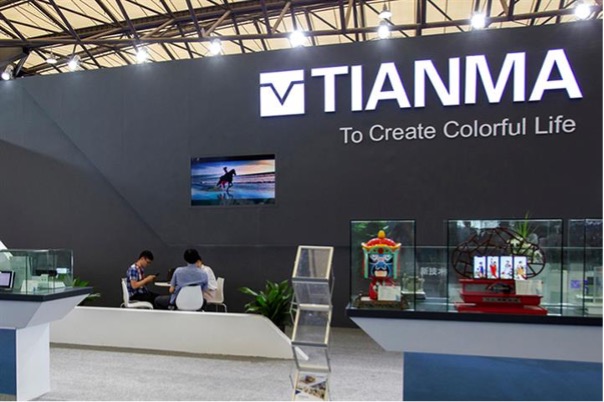
Next comes, Tianma Microelectronics on the list. Tianma is a global leader in the provision of display systems and related support services. The business was founded in 1983. It focuses on offering cutting-edge display systems, effective sales, and services around the globe. Tianma is dedicated to delivering world-class customer service, constant innovation, and support for the numerous design specifications required for a range of industrial applications.
With its development and ownership of cutting-edge technologies in the SLT-LCD, LTPS TFT-LCD, AMOLED, etc., Tianma has distinct advantages in both world-class technology and manufacturing capabilities.
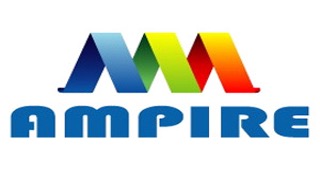
Ampire is a Taiwan-based maker of LCD modules with more than 15 years of expertise. Ampire offers a variety of high-quality products (TFT, CSTN, FSTN, STN, TN) with various technologies (COG, TAB & COB), as well as bespoke designs where appropriate, to fulfill varied applications.
Ampire provides premium LCD mother glass along with other common display panels. However, Ampire Display's primary area of expertise is the creation of customized TFT display modules.
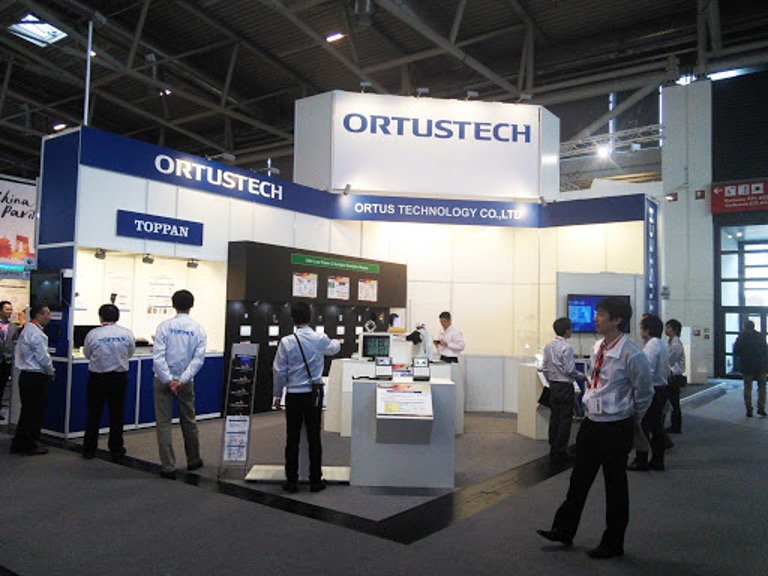
Japanese company Ortus Technology (ORTUSTECH) produces tiny and medium-sized TFT displays of excellent quality that are intended for use in outdoor applications. With more than 30 years of expertise in industrial displays, ORTUSTECH is a market innovator in the LCD space. The unique Blanview technology from ORTUSTECH effectively combines the benefits of transmissive and transflective displays. Its major strengths include optimal readability and color accuracy in practically all viewing angles and lighting circumstances, even when exposed to direct sunlight. The technology is ideal for all mobile applications and battery-powered devices because Planview screens also consume up to 60% less power than traditional transmissive displays. The display produces less heat when operating due to decreased power consumption. This is a tremendous benefit, particularly when exposed to intense sunshine.

HannStar focuses on the R&D and invention of TFT-LCD technology with the aim of expanding and enhancing the visual world.
They offer a variety of goods and concentrate on the vertical integration of industrial resources with our G5.3 TFT-LCD production in Tainan and the Nanjing LCM/Touch factories, developing innovative products for upcoming uses and business models.
In the production of electronics category of the Taiwan Corporate Sustainability Awards (TCSA), HannStar received the Gold Award for 2021.
Back-end liquid crystal panel (LCM) processes and touch products are the primary businesses of HannStar Display (Nanjing) Corporation. Through ongoing improvements, equipment upgrades, as well as the vertical resources integration of HannStar's LCD production process, they provide clients with high-quality display products.
CONCLUSION
The aforementioned businesses are among the global providers of LCD Display modules. In order to compete in the worldwide market, LCD display makers are developing new features and enhanced functionality for the screens.
.jpg)
.jpg)
Massive vacuum tube-based processing devices were used to create the first computers. As time went on, more affordable and portable variations of what a computer will eventually look like emerged. Today, we carry minicomputer devices in our pockets like cell phones. Despite their widespread use, computers are still not generally available in poor nations. The Raspberry Pi computer was developed as a result of the disparity in access to computers and programming tools.
The Raspberry Pi is a tiny, low-cost computer the size of a credit card that attaches to a monitor or TV and uses a conventional mouse and keyboard to operate. People of all ages may study computing and how to write in computer languages like Scratch and Python with the aid of this capable little device. It has all the features of a desktop computer, including the ability to play high-definition videos, browse the internet, create spreadsheets, word documents, and play games. Because it gives developers access to the on-chip hardware or GPIOs, the Raspberry Pi is more than just a computer. We can connect things like LEDs, motors, sensors, etc., and operate them via accessing GPIO.
If you equip the Raspberry Pi with accessories like a keyboard, mouse, and monitor, it can work as a little personal computer. The Raspberry Pi is frequently used for robotics applications, Internet of Things (IoT) applications, and real-time image/video processing. The product has been used in a wide variety of digital maker projects thanks to its ability to interact with the outside world, including music players, parent detectors, weather stations, and tweeting birdhouses outfitted with infrared cameras. People of all ages may about computing and how to write in programming languages like Scratch and Python with the aid of this capable little device.
To accommodate our client's unique needs, Eagle Tech provides a range of standard Raspberry Pi screens. We offer the product in a range of sizes. We can adjust and provide the best display accessories based on the demands and specifications. Our expertise is in customization. We customize the product as per our client’s needs and requirements.
When you’ve already chosen the finest Raspberry Pi kit, finding the best Raspberry Pi screen is necessary if you want to be able to see what's going on. No matter if you chose the Raspberry Pi 4 or even the Raspberry Pi 400, you will still need to select a display to utilize. As a result, we've compiled the top choices for your tiny computer's display.
The 5inch display is the first Raspberry Pi Display on the list. Despite its modest size, this display has a tonne of functionality. The device has a TFT LCD on top of a capacitive touch panel, an HDMI controller, and other components. These have strong display capabilities. his 5-inch monitor has a slim profile and is compact. It may be used as a monitor and is appropriate for a range of applications. It can also be integrated into a structure.
Let’s now talk about some main features of the display:
The 1920x1080@60Hz resolution that can be handled by the following compact 5-inch IPS LCD monitor comes first when discussing its features. When connected to a computer, it could also serve as a monitor and support Windows 11/10/8.1/8/7. Along with the capacitive touch panel, a tempered cover lens with a 6H surface hardness is utilized. Its compatibility with the Raspberry Pi and support for the NVIDIA Jetson Nano, Ubuntu, Kali, and Retropie operating systems make it one of the top Raspberry Pi Touch screen displays.
Additional features:
Second, on the list, we have the 7inch Raspberry Pi Display. This one is quite a bigger display than the first one but not very large. The model number of the display is ETTW0702501. This display is another LCD touch display device designed exclusively for Raspberry Pi devices.
The following capacitive touchscreen display enables customers to develop integrated, all-in-one projects like tablets, infotainment systems, and embedded projects.
Some of the main features of the 7inch Raspberry Pi Display are as follows:
Similar characteristics to the 5inch monitor, this 7-inch display sports a 7-inch LCD touch screen with a maximum resolution of 1920x1080@60Hz and a hardware resolution of 800x480. Along with this, the capacitive touch panel's tempered cover lens's surface hardness may reach 6H also.
Additional features:
The 7-inch Raspberry Pi Display, which has a greater resolution, comes next. This display has an IPS TFT LCD panel, a tempered glass capacitive touch screen, and an HDMI controller board. The display has a brightness of 250 nits and a resolution of 1024*600. These product elements are advantageous and provide strong interaction and display possibilities. What makes the product stand out is its resolution and its interactive features.
Some of the main features of the touch screen display are as follows:
Similar to other products this one also comes with a tempered cover lens used by the capacitive touch panel which has a surface hardness of 6H. In addition to the characteristics already described, it incorporates a Type-C touch interface (touch panel communication protocol is I2C).
Additional features:
The 8inch display is ranked fourth on the list of the best Raspberry Pi displays. This one was built as an 8-inch touch HDMI display, which is a bit bigger. It comes with an 8-inch TN TFT LCD panel with tempered multi-touch capacitive touch screen with 800*480 resolution and support for 500nits of high brightness. It has strong display and interaction capabilities and is linked to an HDMI controller board. The gadget is among the finest raspberry pi displays of 2022 because of these beneficial features. Almost similar features as the others.
Additional features:
Another 8-inch Raspberry Pi display designed for Raspberry Pi applications is included on the list. The only difference between all the features is the display's 800*600 resolution. Its components include a TFT LCD screen panel with an 800*600 resolution, 350 nits of brightness, a tempered multi-touch capacitive touch panel that is directly attached to it, and an HDMI controller board. This device has features that are comparable to those of the previously stated 8-inch display. It has strong interactive and presentation capabilities.
Additional features:
Another point about the display is that this monitor may be easily installed in an embedded system and applied to a wide range of applications. Eagle Tech provides specialized services for our Raspberry Pi displays, including multiple sizes, resolutions, touch cover glass, and branding.
You've come to the correct spot if you're looking for a 9-inch Raspberry Pi touchscreen display. It was designed exclusively for Raspberry Pi computers, and it has a 9-inch HDMI touchscreen. This 9" raspberry pi display is connected through an HDMI controller board and features a TFT LCD panel with a 1024*600 resolution and 500nit brightness. It also features OCA bonding with a tempered multi-touch capacitive touch screen. It offers robust display and interaction capabilities.
Talking about some main features of the product, this 9-inch touchscreen display may be easily mounted in an embedded structure and is suitable for a range of applications. Along with this, it also sports a 9-inch IPS display with a hardware resolution of 1024x600 and is capable of 1920x1080@60 Hz. The Surface hardness of the tempered cover lens for the capacitive touch panel is 6H.
Additional features:
The 10.1" touch screen display for the Raspberry Pi is available for usage because bigger is better. A large touch screen display for Raspberry Pi applications is a 10inch display. This display, which is included in the list of the top Raspberry Pi displays, is built on an IPS TFT LCD screen with a resolution of 1024 x 600 and a brightness of 250 nits. installed an HDMI controller board and tempered multi-touch capacitive touch panel with advanced interaction and display capabilities.
Additional features:
The only difference between this 10.1-inch display and the one above is that this one is made up of a 10.1-inch TFT LCD panel with a resolution of 1280 by 800 and 350 nits, as well as a multi-touch capacitive touch panel that is directly connected to an HDMI controller board and has powerful interactive and display capabilities.
Talking about its features, which are as follows:
The greatest screen size on the top raspberry pi displays of 2022 is now available. Currently, a 15.6-inch touch screen is the largest "particularly designed for Raspberry Pi devices HDMI touch display. A toughened multi-touch capacitive surface and an IPS TFT LCD with 1920*1080 resolution are both used in this 15.6" touch-sensitive panel. They offer strong interactivity and display capabilities and are linked by an HDMI controller board. These are the primary characteristics of the display that set it apart from other ones.
Here are the main features:
The following factors can be taken into account when selecting your Raspberry Pi display, Display Resolution, Board to be used with, and Touchscreen. How many pixels your screen can display both horizontally and vertically depends on its resolution. You won't need to scroll as much since the screen with the higher quality (i.e., more pixels) will be able to show you more of what you're working on.
It's crucial to get the appropriate Touch Display for the suitable board. Each Touch display has a different display interface. Some people can access it through HDMI, USB, display ribbon wire, etc. Even if the majority of Raspberry Pi Boards offer fundamental interfaces like HDMI and USB, it is crucial to match the proper Display with the appropriate Board. It should be appropriate for the board, and its intended usage for the Display should be clear.
So, via Eagle Tech, these are the top 9 Raspberry Pi displays. We at Eagle Tech work hard to offer the greatest items to our customers. In addition to the aforementioned items, we also work with product modification. To ensure that our customers get exactly what they want, we tailor the items for them.
We hope the article succeeds in its goal of assisting you in making the best product choice for your needs and requirements. The key qualities and requirements are all listed in the article "Best Raspberry Pi Display - 2022". You can check the website directly for any more information or get in touch with us for assistance.
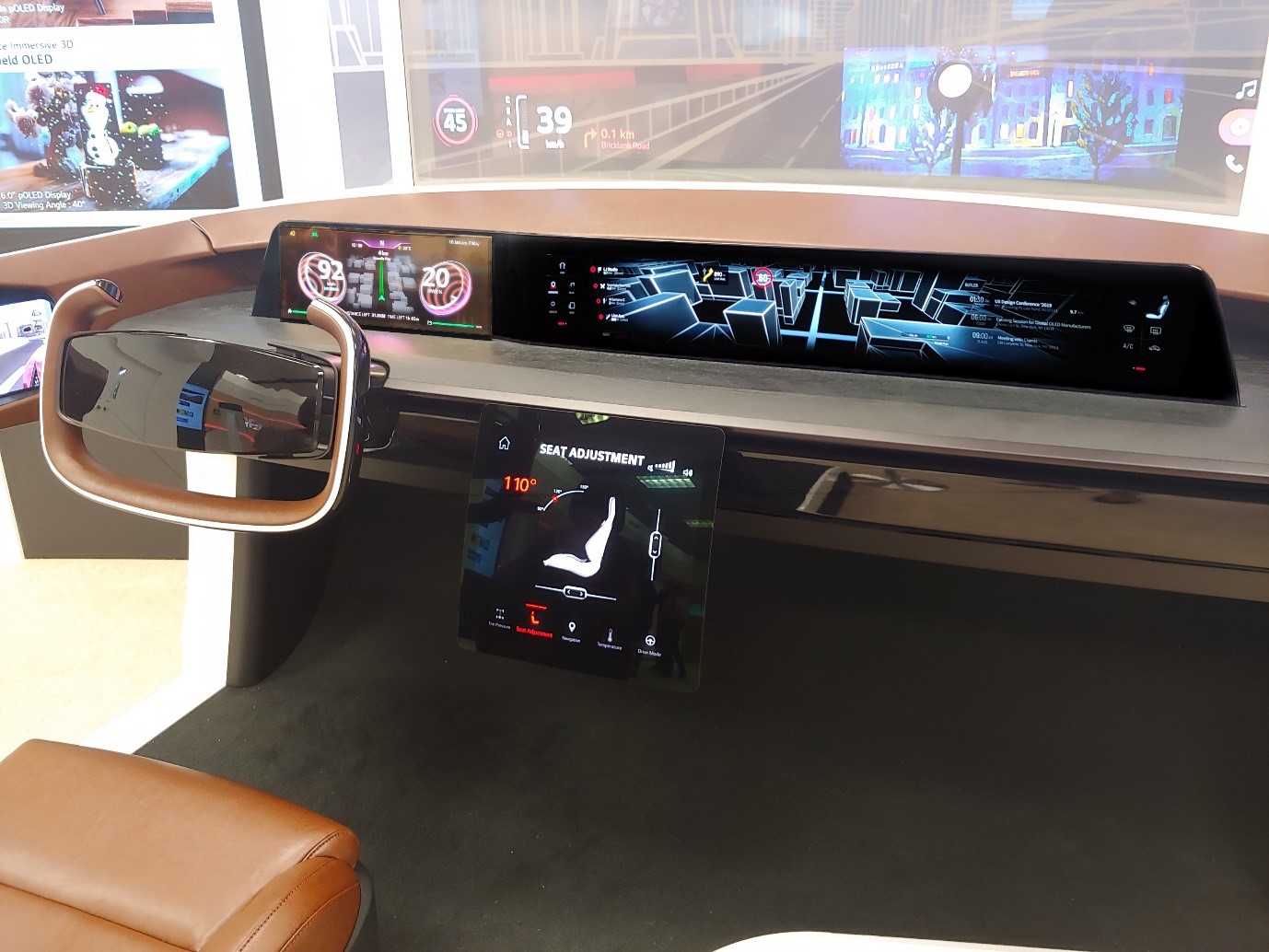
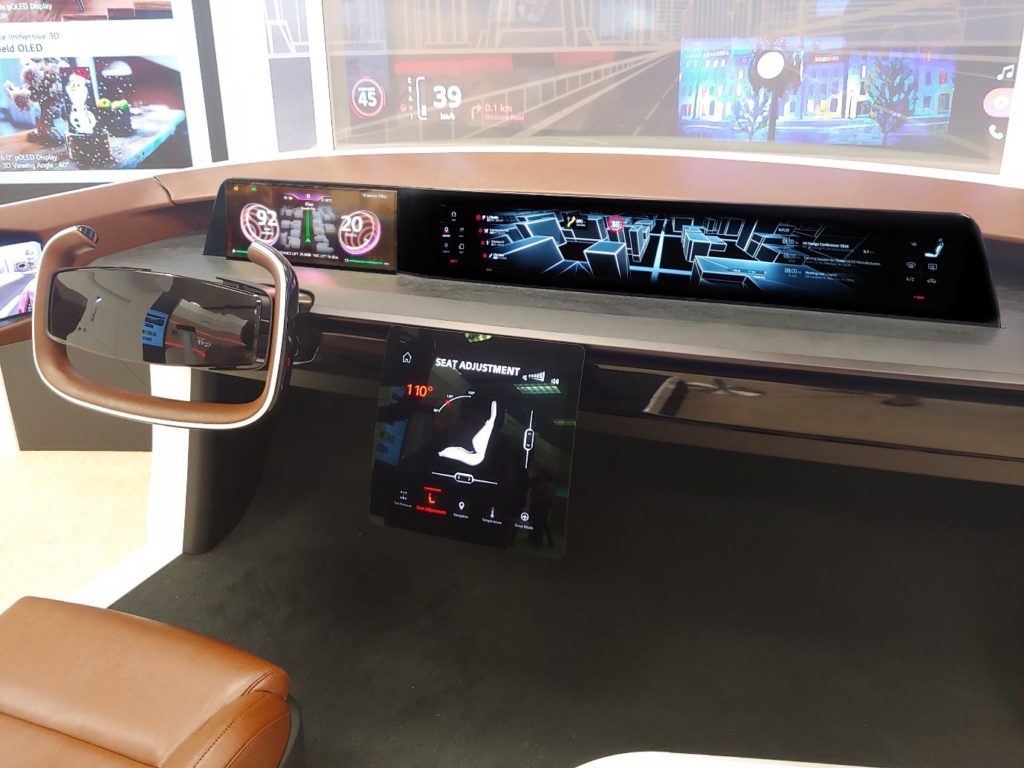
Any clear display that shows information inside a car without having drivers change their regular viewing angles is called an automotive display. Various segments of the automobile business are changing as a result of autonomous driving. One vertical that embraces these technologies and presents all the information digitally is the in-vehicle display. The automobile sector is increasingly playing a significant role in the display sector. Talking about the automobile industry, since the 1980s, when the first touchscreen panels started to emerge in cars and other vehicles, the worldwide automobile touchscreen market has experienced tremendous growth. The integration of display panels into dashboards and other areas of vehicles and motorcycles has been expanded by the industry today.
convenience, and comfort in vehicles. For convenience, luxury, safety, and security benefits, advanced infotainment systems, gesture control systems, telematics, steering-mounted controls, heads-up displays, and central controllers are increasingly employed in passenger cars. Governments all across the world are putting into place rules regarding the security and safety of vehicles. Automotive Display Industries are working to fulfill these demands.
Drivers anticipate that infotainment systems will be as quick, nimble, and connected as their smartphones. Engineering challenges arise when trying to balance these expectations with the demanding constraints of the automobile environment. Eagle Tech's layout and optimization skills let clients produce designs with performance that is tailored to a particular application. Our engineers have a wealth of experience handling problems and offering automobile solutions and services. You can rely on us to provide car touch screen display solutions with the best possible quality, usability, and longevity.
Whatever the powertrain technology, our cars now contain a lot more pixels than they did a few years ago, and this trend is projected to continue. This is explained by a move toward bigger screens as well as a major rise in the number of displays within the car. The instrument panel, the rearview mirror, the A-pillars, the front, rear, and overhead consoles, the front seatbacks for rear passengers, the projection on the windscreen, and even the steering wheel all have been displayed these days. Display panels are being integrated into practically every interior surface of vehicles by automotive designers, and this will undoubtedly have a significant impact on how consumers will interact with future vehicles.
Also, due to the quick development of new-age technologies like autonomous driving, augmented reality, and big data, the global automobile industry is commonly regarded to be on the verge of significant change in terms of manufacture, sales, and the whole business model. As a result of these technical advancements, several automobile industry auxiliary sectors are going through a fundamental shift. One industry sector that has effortlessly adopted these technologies is the car display business, which has improved its chances of commercial success.
Automotive Display Market Analysis
When we are talking about how the Automotive display is a trend, we need to also discuss how the automotive display market has grown in these years.
In the forecast period of 2021 to 2028, the automotive display market is anticipated to expand at a compound yearly growth rate of 9.5%. The primary display or indications of the state, and other features used on the vehicle, are known as automotive displays.
Over the years, the growing demand for in-car entertainment has directly influenced the growth of the automotive display market by generating chances for rear seat entertainment. In addition to providing entertainment options, these displays are intended to serve as a conduit for information and entertainment between the driver or passenger and the condition of the vehicle. The market for automotive displays is expanding due to the rising demand for digital instrument clusters.
Growing customer demand and desire for driving ease and safety, as well as increasing demand for augmented reality-based displays, are all contributing to the market's expansion.
Various types of Automotive Displays – 2 Wheelers and 4 Wheelers
Automotive display technology progressed to promote driver safety while maintaining a comfortable cabin atmosphere and cutting-edge infotainment systems. Modern dashboards and instrument panels don't need the dials and buttons that they formerly had, and drivers now have more sophisticated and intuitive control over the systems in their cars. The development of car displays enables the management of many programs, including navigational systems, safe driving systems, and entertainment systems.
Control systems, which include touch panels, are displacing electromechanical switches and controls in modern society. Even more minute controls are involved, including the ones used to adjust the ac, the angle of a car's outside mirrors, or the buttons on the multifunction steering wheel. The replacement of rear-view or outside mirrors with cameras and display systems to improve safety by offering a greater viewing angle is another recent development in addition to the electronic mirror.
Below mentioned are the various kinds of automotive displays that we focus on and manufacture. Let’s talk about them.
Infotainment Display
The conventional infotainment system is a touchscreen or display located in (or on) the dashboard in the center of the vehicle. Over the past few years, they have grown in size, with some being comparable in size to or even larger than your home tablet. The importance of information will increase as automobiles become more digital, since you may get real-time parking information, weather predictions, and other services via an onboard SIM card. These displays combine many automotive technologies to provide the driver and passengers with entertainment and information via audio/video interfaces, control components such as touch screen displays, button panels, voice commands, and more. Although some HD screens are 20 inches wide, the typical size of a vehicle entertainment system display is 2 inches to 12 inches.
Rearview Mirror Display
Rearview Displays are displays that attach to your factory-installed rear-view mirror screen. Reverse image backup camera systems often employ rear-view mirror monitors. A rearview mirror display provides a handy method by providing a great vision through a mirror and LCD screen, you may reverse the car.

Rearview mirror display systems, often known as reverse cameras, are more than simply an additional mirror for your automobile. These technological safety tools can even direct you to your destination while avoiding traffic jams and helping you view what's in front of or behind your car. Particularly for bigger cars, they may be essential for maintaining safety and being aware of your blind zones.
Car Screen Display
The introduction of touch-screen infotainment systems, the replacement of traditional dashboards with digital ones, and the addition of rear-seat leisure displays as an option on many vehicles have all occurred over time.
To keep you occupied on your trip and to aid in good automobile navigation, you must have a quality car display screen fitted in your vehicle. The most up-to-date automotive display panels offer full enjoyment while driving.
Side View Mirror Display
Driver safety on the road is significantly influenced by the side vision mirrors. Drivers must always be conscious of their surroundings, especially when turning and passing other vehicles. However, there haven't been any significant improvements to the conventional side view mirrors in recent years. They are the car's neglected components. So, side view mirror displays are an update here. There are no glass mirrors in the digital side view mirrors. They are made up of displays and cameras instead. On the screen, everything that is visible to the camera is viewable. This ensures the general security and comfort of drivers.
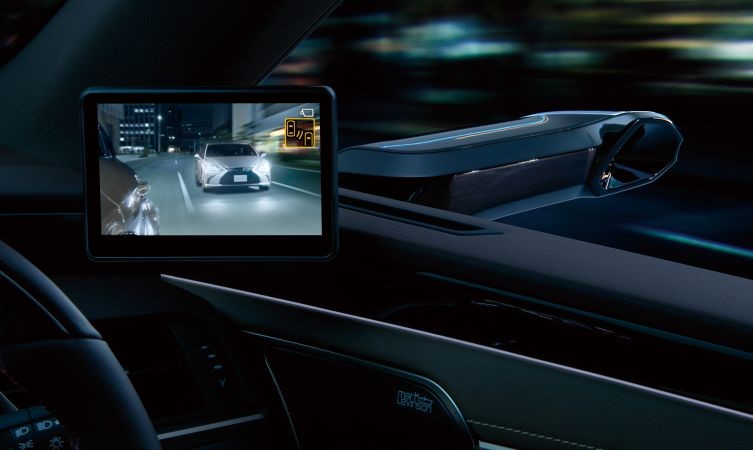
Rear Seat Entertainment System Display
The introduction of digital TV, streaming, and gaming has already changed how we consume media at home and when traveling, and this pattern is quickly spreading to personal transportation as well.
Rear-Seats Entertainment, a growing car entertainment system, heavily relies on processing for graphics, video, and music. Multiple multimedia material sources, including TV, DVD, the Internet, digital radio, and others, are integrated into these systems.
With Eagle Tech's specialized rear seat car display systems, you can watch your favorite movie on a giant screen in the backseat of your vehicle. For these systems, we provide the finest screens. We provide the best in automobile entertainment for the backseat and an easy installation technique.
Cluster Display
It is one of the most important and common displays among the various automotive displays. The many displays and indicators that allow a driver to operate an automobile are kept in the instrument cluster. Several instruments, such as a speedometer, odometer, tachometer, oil pressure gauge, fuel gauge, etc., as well as other indications for system errors and warnings are included in this.
The instrument cluster of a car is typically situated right above the steering wheel and provides the driver with vital information about how the car is operating, including the fuel level, speed, and condition of various systems. Typically, this data is shown graphically using lit symbols, digital readouts, and needle gauges. Usually, the instrument cluster's main focal point is the speedometer.
Cluster displays are highly important and keeping that in mind, Eagle Tech designs one of the best cluster displays for automobiles.
2-Wheeler Cluster Display
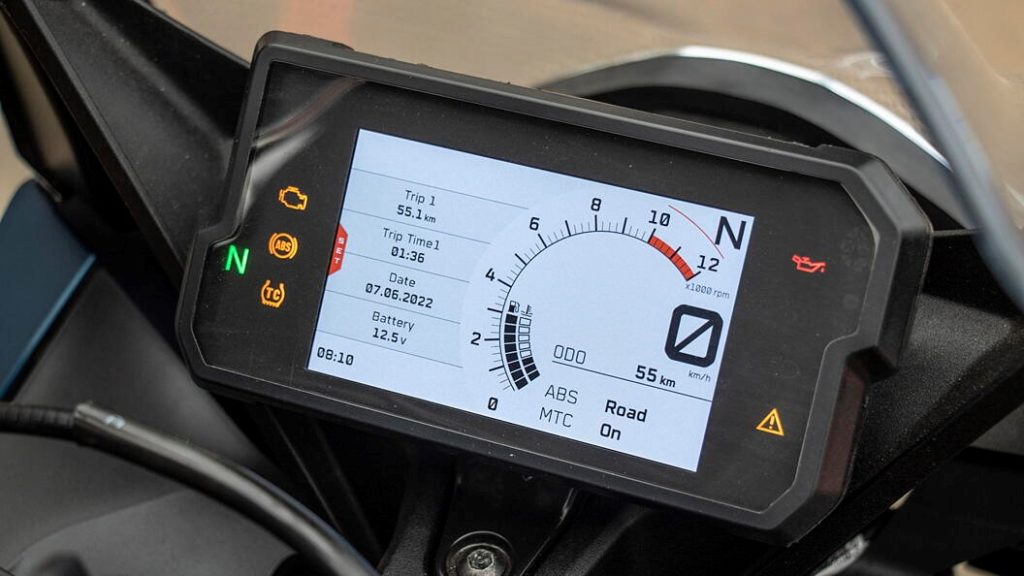
As was previously mentioned for 4-wheelers, a 2-wheeler vehicle's instrument cluster display similarly provides information such as speed, fuel gauge (petrol/oil levels), engine temperature, distance, and specific cautions and alarms.
The many displays and indications included in automotive instrument clusters help drivers properly run their vehicles.
The above-mentioned are the automotive displays that we provide for automobiles. Along with these, we also deal in AC Control Displays and GPS Navigation.
All About What We Can Provide You as An Automotive Display Manufacturer.
Leading Chinese touch screen and TFT LCD module manufacturer Eagle Tech was founded in 2011 and is based in Guangdong Shenzhen. We are experts in the design, production, and marketing of Resistive/PCAP touch screens and TFT LCD modules.
To provide improved connection options, increase vehicle safety, and improve in-car user experience, the whole automotive sector is pushing toward creating novel technology. Eagle Tech offers a wide selection of high-quality screens if you want to upgrade to a car or bike with more modern technology. We also work with display customization for our clients.
The main applications of automotive displays that we deal in are:
If we talk about the automotive display benefits in the automotive industry, it grabs the attention and interests of the buyers. People these days want everything to be digital and the old traditional way of displaying automobiles won’t work anymore. Thus, we say automotive displays are a big trend these days.
Eagle Tech is a Touch TFT LCD Module Manufacturer for Automotives. We deal in various automotive displays. TFT LCD panels are currently used in the majority of automobile displays. The automobile display is often needed to have the qualities of moisture-proofing, dust-proofing, anti-glare, high-brightness sunlight, high temperature, and low-temperature resistance due to the specificity of the usage environment, and we focus on it all.
We are all well aware of the fact that the automotive industry will continue to evolve and move toward touch screen displays in vehicles. You can rely on Eagle Tech as a reliable auto touch display manufacturer.
So, to meet your demands, Eagle Tech's unique products and touch screens may be combined in a variety of ways. Eagle Tech excels at offering solutions for touch displays.

OVERVIEW
The market for electric vehicles (EVs) is anticipated to reach USD 802.75 billion by 2028, growing at a CAGR of 21.6% from 2021 to 2028. Drivers are looking toward the future dominant car technology. Governments all over the world are investing in electric vehicle charging infrastructure and reducing their carbon impact. The nations' charging infrastructure will be put under further stress as the use of EVs increases. The need for touchscreen displays and touch panels that may be used to manage electric cars (EVs) is increasing as EVs become more and more popular. Picking the perfect charging display becomes a hectic job with so many alternatives available in the market. To make it easier, we have this article here, ‘How to Pick the Best Display for EV Charger?’.
This explosive market growth is only likely to get stronger as EVs become cheaper and as charging infrastructure expands. To make it easy for consumers to refuel their automobiles, Touch Screen User Interfaces are always included with Electric Charging Stations. There are a variety of factors and features that we need to keep in mind before purchasing an EV charger display.
These days, there are several businesses devoted to providing the greatest electric car charging options on the market, however, only the top ones will endure. Given that consumers engage with the display the most, it is one of the elements that may set it apart from the competitors.
We at Eagle TECH manufacture touch screens intended specifically for use with charging stations. We manufacture TFT LCD for EV chargers. Here is a list of the factors that will guide your decision-making and prevent errors.
Size of the screen
First thing first, the size of the display is the most important thing to keep in mind. Everything nowadays is concerned with visuals and displays and we live in a visual world, everything around us is vibrant and vivid. Therefore, the size of the display screen matters the most. So, let’s talk about the most popular sizes of the display.
The most popular display sizes for EV chargers are 7′′, 10.1′′, and 15". Your design will determine the size, but it's important to think about which will be the most practical for the user. People of all ages, in various conditions, and with a variety of skills may use the station, therefore choosing a display smaller than 7 inches may make usage more difficult for some of these users.
High Brightness
The second feature that we need to look for in an EV charging Display is the high brightness of the screen. Because nothing is more annoying than a display with unclearly visible material. Therefore, the greater the display performs outdoors, the brighter it is and thus, becomes easy to use for the user.
The TFT LCD manufactured by Eagle TECH comes with a high level of brightness which makes it easy for the users to use it as it is clearly visible and won’t strain the eyes.
Waterproof
The product by Eagle TECH is a waterproof product. Charging Stations frequently operate unattended and must withstand the damaging effects of the rain, sun, and environment in general. Waterproofness is thus another crucial component of the EV charging display. For the display to be long-lasting, it must be waterproof.
Touchscreen Panel
Capacitive touch technology is currently taking over the planet. The need for touchscreen panels that may be utilized in electric vehicle (EV) charging is rising along with their popularity. How much data may be displayed at once depends depend on the size of the touchscreen panel. The quality of the image will depend on the touchscreen panel type—resistive or capacitive, for example. Additionally, factors like broad viewing angles and sunlight legibility will affect how simple it is to see the display in all lighting circumstances.
Our TFT LCD Display offers the best touch screen experience with our specialized touch screen.
LCD Display
Any EV charger must have an LCD. It gives details about the battery level, anticipated time to full charge, and charge status. There are several different embedded touchscreens monitor options available, ranging in size from little 7-inch devices to huge 55-inch units.
You should think about the characteristics that are crucial to you when selecting an LCD for your EV charger. How much data may be displayed at once depends depend on the size of the LCD panel.
Tough and Thickened Glass
The majority of chargers found in public areas are vulnerable to damage or misuse. Usually, the glass that is thermally tempered or chemically strengthened and at least 4-6 mm thick is best for sizes 7′′–10.1′′. Additionally, Gorilla Glass, a chemically strengthened form of glass with a 9H hardness rating that can withstand a pressure of 50 kg, may be worth taking into consideration (when the diamond is 10H). However, thermally tempered glass with a thickness ranging from 4 to 10 mm continues to be the most widely used and economically advantageous material, and we employ this technique in the majority of our projects.
We at Eagle TECH customize the product according to our client’s needs and wants.
Interface
Drivers must be able to understand the user interface even in challenging lighting situations to effectively monitor the status of their charge. No matter how much rain, dust, or grime accumulates, the user interface and touchscreen must be interactive and responsive. Ensuring that the touchscreen performs optimally for the application to which it is being put.
Eagle TECH provides the best user interface which is one of the most important factors that one needs to keep in mind before purchasing the EV charging Displays.
Optical Bonding
By using optically clear adhesives to fill the air spaces between the cover lens, sensor, and display layers, optical bonding significantly lowers the internal reflections that are created between those layers. This not only dramatically enhances the mechanical strength of the display but also significantly increases screen readability in strongly illuminated and outdoor settings.
Optical bonding offers a lot of benefits such as Enhanced sunshine readability lowers reflections, protects the display from humidity or fog, four times or more the contrast ratio, greater toughness and durability, reduced electricity use, etc
The above mentioned are the main features that need to be present in a good EV charging display nowadays. Also, the TFT LCD for EV charger from Eagle is a better product and will provide all the solutions to the problems of its clients. We deal in customized products, which means we also make the product according to clients’ customization.
To meet your demands, Eagle TECH's unique products and touch screens may be combined in a variety of ways. Eagle TECH excels at offering solutions for touch displays.
Click on the link to fill out the form if you're seeking a touch display specialist or manufacturer. Within 12 hours, a corporate representative will respond to your message.
CONCLUSION
The size, kind, and features that are essential to you should be taken into account while selecting the ideal display for an EV charger. The amount of information that can be presented at once will depend on the display size. The quality of the image will depend on the display type, such as LCD or LED. Additionally, factors like broad viewing angles and sunlight legibility will affect how simple it is to see the display in all lighting circumstances.
Since 2011, EAGLE Tech has dedicated itself to offering touch display solutions. It is a seasoned producer of TFT LCDs and touch screens that offer Resistive touch screens, PCAP touch screens, and TFT LCDs in both standard and bespoke forms. In terms of one-touch display module solutions, our goal is to become a global one-stop interactive interface solution supplier for all of our clients.
Therefore, for EV chargers, we provide one of the best and most customized TFT LCDs to our clients.
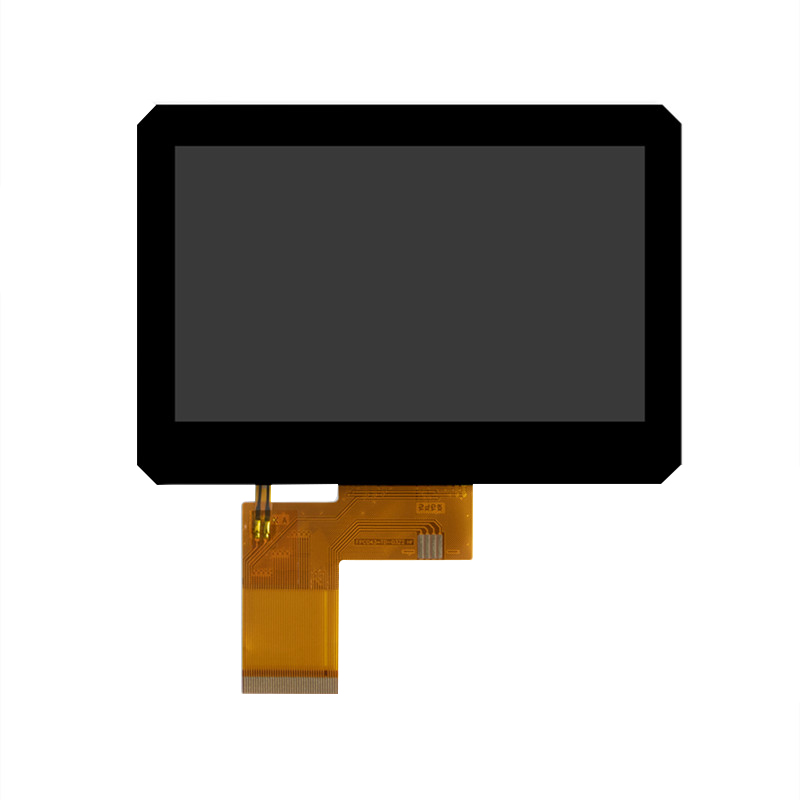
Above is a picture that shows the display effects difference between air bonding and direct bonding.
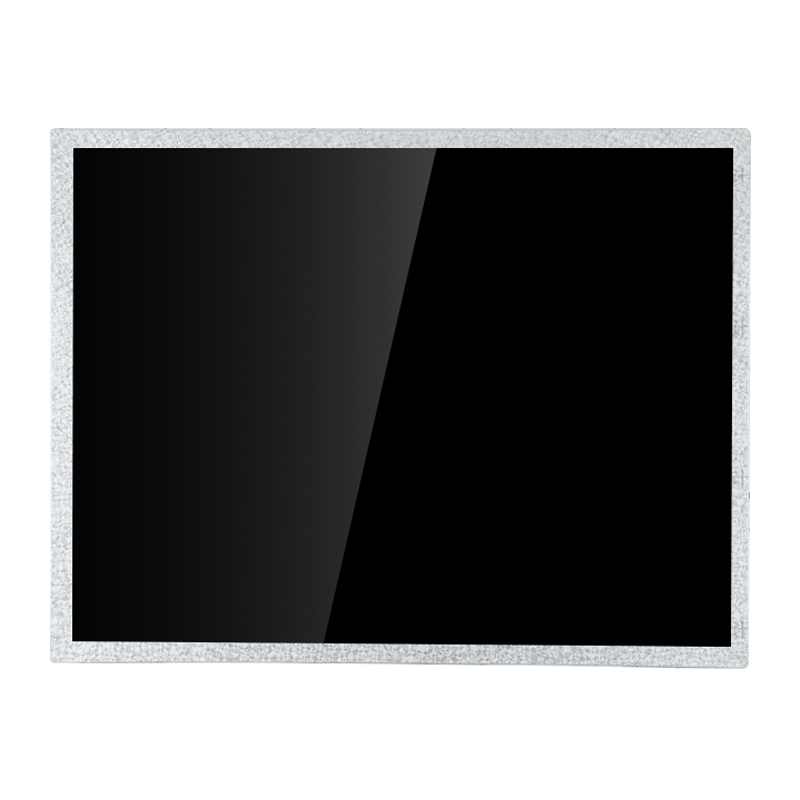

Digital displays have become an integral part of modern consumer and industrial electronic devices. Digital displays provide an intuitive and effective way of human-machine interaction. From smart watches to PC monitors, display panels are to be found everywhere. In a matter of a few decades, digital display technology has advanced by leaps and bounds. Today a large number of display technologies are in existence such as CRT, LCD, OLED, QLED, and Plasma. In this article, we will review the TFT and IPS display technologies and will draw a comprehensive comparison between the two.
In-plane switching or IPS is a sub-category of LCD technology. There are basically four types of LCD panels: TN, VA, IPS, and OLED. Selection of appropriate display technology is crucial as it affects response time, viewing angle, contrast ratio, and black levels.
In an IPS panel, rows of liquid crystals are placed in parallel between two glass surfaces which results in improved color accuracy and super-wide viewing angles. Some of the major advantages of IPS technology are:
Therefore, IPS panels are ideal for users who seek high color accuracy and wider viewing angles. Regardless of the viewing angle, IPS panels deliver outstanding consistency. Another important feature of IPS panels is the higher number of available colors due to which these panels are suitable for professional color space technologies such as Adobe RGB. Prominent variations of IPS technology include S-IPS (super IPS), E-IPS (enhanced IPS), H-IPS (horizontal IPS), P-IPS (professional IPS), and PLS (plane to line switching).
Initially, IPS panels suffered from inferior contrast ratio and response time however, with the passage of time these shortcomings have largely been eliminated. These improvements have led to the acceptance of IPS monitors amongst the gaming community. Having said that, IPS panels do exhibit some drawbacks some of which are listed as follows:
Considering the pros and cons of IPS panels, it is clear that IPS panels are best suited for individuals requiring high color accuracy and wider viewing angles. Hence, these panels are ideal for graphic designers, animators, motion graphics professionals, digital artists, and high-end office users. Despite significant improvements in response time and contrast ratio, the acceptance of IPS technology amongst gamers is somewhat slow.
Thin film transistor or TFT is another type of LCD technology. TFT uses an active matrix LCD as opposed to the passive matrix or direct-driven LCD. In direct-driven LCDs, voltage is applied directly to discrete image segments however this technique is impractical for larger displays as it requires a very high number of connections. Contrarily, in TFT displays, pixels are addressed in rows and columns which reduces the number of required connections significantly. In TFT displays, liquid crystals are placed between conductive ITO layers, and each transistor is controlled independently which leads to enhanced response time. The field-effect transistors for the TFT display are fabricated using a thin film of amorphous Silicon deposited on a glass substrate. For high-performance TFT displays, polycrystalline Silicon is used.
TFT offers improved addressability and contrast as compared to other LCD displays. Therefore, TFT displays are sharper and brighter as compared to common LCD displays. Major advantages of TFT displays are:
Some of the disadvantages of TFT technology are as follows:
TFT displays find their applications in devices like TVs, mobile phones, computer monitors, gaming consoles, and car entertainment systems. From small display units for handheld devices to large screen displays, TFT technology can be employed for clear and crisp image quality.
TFT and IPS are both active-matrix LCD displays. Both of these technologies are widely used in numerous applications and have their own sets of pros and cons. In this section, we will compare these two technologies on the basis of a number of different factors.
When it comes to viewing angles, IPS reigns supreme. The image quality and contrast remain the same in IPS panels regardless of the viewing angle. TFT displays, on the other hand, have poor viewing angles. Colors and contrasts in TFT displays are heavily dependent on viewing angles. Therefore, IPS panels are the technology of choice for applications requiring wider viewing angles.
The contrast ratio is an important factor that affects the performance of a display unit. The contrast ratio is defined as the ratio of the brightest white to the darkest black that a particular display unit can produce. IPS displays have a higher contrast ratio when compared with TFTs and therefore can produce higher quality images.
Cost is one of the most important factors in the selection of any technology. IPS is a higher-end premium technology and therefore tends to be more expensive. Due to a more mature production process, TFT displays have a lower cost of manufacturing as compared to IPS panels. With a cost difference of around 30-50%, TFT panels beat the IPS panels by a mile.
In terms of image quality and color reproduction, IPS displays are the clear winners without a doubt. IPS displays have more available colors as compared to other LCD displays and therefore are highly suitable for creative design work. With wider viewing angles and aspect ratios, IPS displays offer more realistic image production as compared to TFT panels.
TFT displays are ideal for energy-efficient applications as they have lower power consumption. IPS displays consume 15% more power as compared to other LCD technologies. Due to this reason, TFT displays last longer for the same amount of battery juice.
This category is a tie since both TFT and IPS provide adequate performance in this regard. Both types of LCDs avoid image blurring and ghosting and provide clear and crisp images.
IPS and TFT are both widely used display technologies in consumer and industrial electronics. IPS panels are more commonly used in higher-end expensive products such as monitors, Mac computers, and iPhones. Although IPS panels provide superior performance, image quality, and wide viewing angles, they are more expensive and consume more energy. TFTs do not provide as high performance as IPS panels but they are more cost-effective and energy efficient.
| Feature | IPS | TFT |
| Viewing Angles | IPS offers wide viewing angles while maintaining image quality and integrity | Image quality in TFT panels suffers as the viewing angle changes |
| Contrast Ratio | IPS panels offer a superior contrast ratio | The contrast ratio of TFT panels is not at par with IPS panels |
| Response Time | IPS has a response time of approximately 0.3 ms | TFT has a response time of around 10 ms |
| Cost | IPS panels are expensive | TFT panels have a low cost as compared to IPS panels |
| Color Reproduction | IPS panels offer superior color reproduction and image quality | Color reproduction and image quality of TFT panels are lower than that of IPS panels |
| Energy Consumption | IPS panels consume 15% more energy as compared to other LCD panels | TFT panels have lower power consumption as compared to IPS panels |
| Ghosting | IPS panels are resistant to ghosting | TFT panels are also resistant to ghosting |
Display technologies are an integral part of modern consumer electronic devices. Display technologies are constantly evolving and new technologies are introduced regularly. In this article, we have explained the IPS and TFT technologies and have drawn a comparison between them. IPS technology offers excellent wide viewing angles, image quality, response rate, and contrast ratio. The main drawbacks of IPS panels are high power consumption and high cost. TFT panels do offer lower cost and high energy efficiency but their image quality is not as sharp as IPS panels. Both of these technologies are used widely and have their own applications. IPS panels are mostly used in high-end gadgets and phones while TFT panels are mostly used in mid-tier electronic devices. If wide viewing angles and sharp image quality are your priority then you should go with IPS panels. If cost and energy savings are your main focus then TFT is the technology you should opt for.
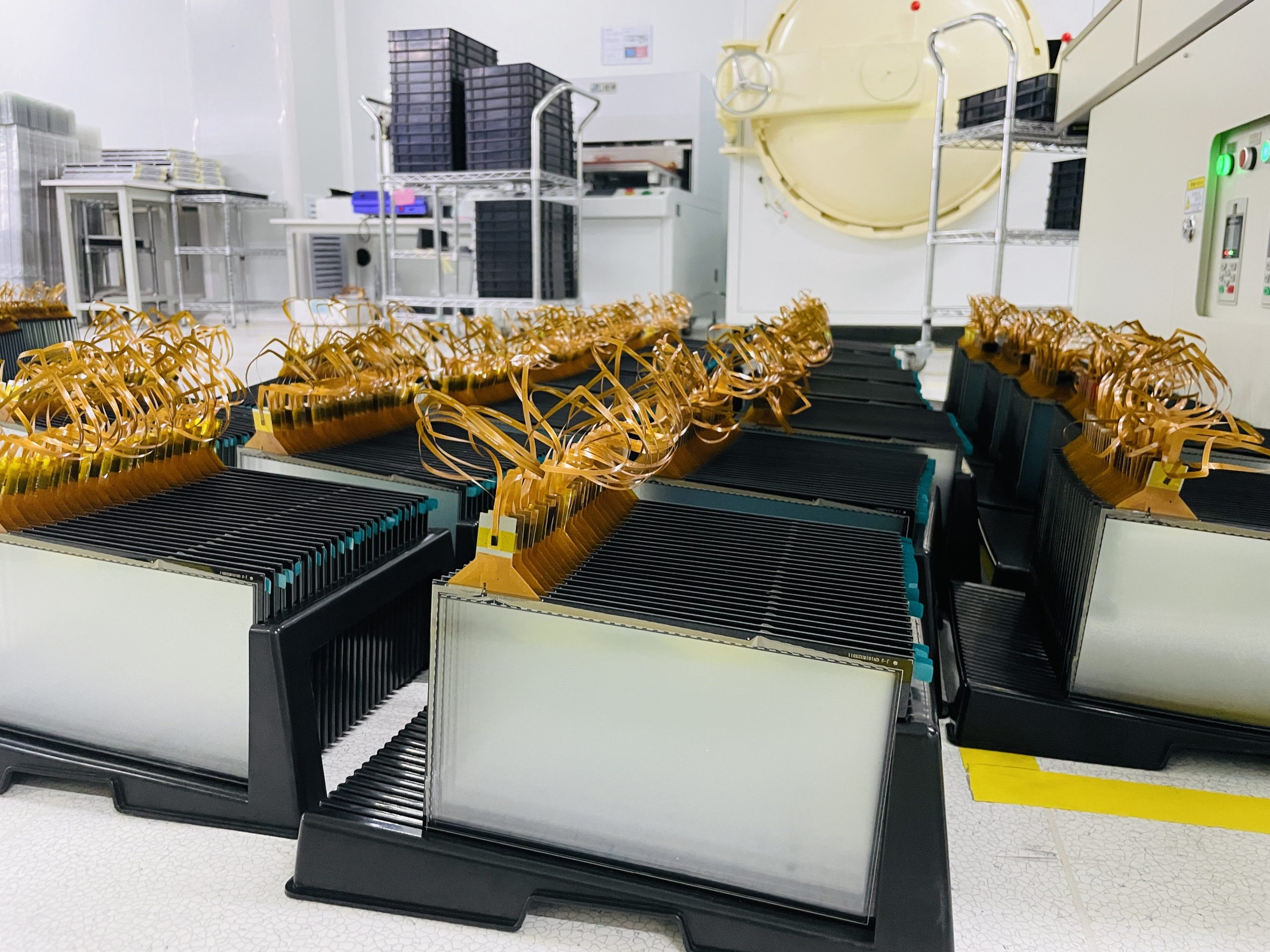
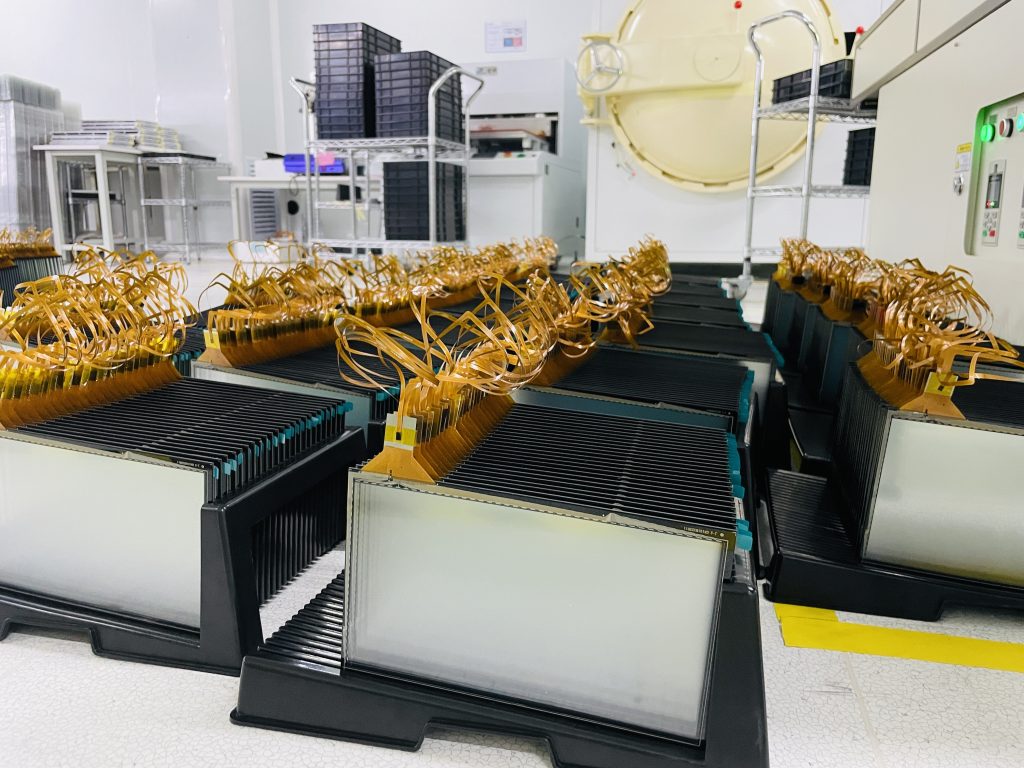
Digital electronics are the backbone of modern-day civilization without any doubt. Whether it is household appliances, office equipment, industrial machines, or military hardware, digital electronic circuits run the show.
The advent of smartphones has accelerated the pace of digitization and brought forth a digital revolution in a matter of a few years. Not so long ago, people used to interact with their phones through buttons. However, rapid advances in display technology have enabled users to interact with their phones through touch screens. Today even the lowest-end smartphone devices feature touch screen displays. The popularity and widespread adoption of touch screen displays are not only limited to smartphones. Wearable devices like smart-watches and fitness trackers also boast touch screen displays.
In this article, we will explain the key differences between resistive and capacitive type touch screen displays.
The user interfaces of earlier computers and electronic devices largely consisted of buttons. A typical example is a keyboard that is still used as the primary input device for computers and laptops. However, as the size of electronic devices started shrinking, button-based interfaces soon became a liability that consumed precious space. Touch screens were then presented as the interface of choice for space-constrained electronic devices. The inclusion of touch screen interfaces in smartphones kick-started the era of mobile phones and handheld computing devices.
Any display device that allows the users to interact with electronic devices through the touch of their finger or a stylus fall under the category of touch screen displays. Touch screen displays are an efficient and elegant alternative to keyboards, mice, and joysticks for navigating the graphical user interfaces of digital devices. Today a vast array of electronic devices feature touch screen displays including smartphones, tablets, notebooks, smart watches, refrigerators, and TVs.
Multiple touch screen technologies are available in the market today. There are four major types of touch screens.
Resistive and capacitive are the most widely used touch screen technologies. The type of touch screen display determines several factors including actuation force, response time, operating life, sensitivity, multi-touch operation, and image resolution.
A resistive touch screen display takes pressure as input. This pressure can either be applied through a finger or a stylus device.
The resistive touch screen is constructed using multiple layers of plastic and glass. The front layer is made from scratch-resistant glass while the bottom layer is made from chemically toughened glass. Both the layers are coated with a conductive material (Indium Tin Oxide or ITO). The glass and plastic layers are separated from each other through air gap spacers.
When a user applies pressure on the front plastic layer, a voltage divider circuit is formed. The measured resistance of the voltage divider circuit provides the exact location of the touch point. Hence, this type of display essentially measures the change in resistance value to determine the point of contact.
Salient advantages of resistive touch screens are:
While most modern smartphones feature capacitive touch screens, resistive touch screens still find their applications in gaming consoles, home appliances, and industrial HMIs (human-machine interfaces).
Some of the drawbacks of resistive touch screens are:
Unlike resistive touch screens, capacitive screens do not require pressure input for sensing touch. Capacitive touch screens make use of the capacitance of the human body for the measurement of the touch point.
In a capacitive touch screen, a glass layer is coated with a transparent conductor like ITO (Indium Tin Oxide). The capacitance of the human finger causes a change in the electrostatic field of the touch screen. This change in capacitance is then measured by a microprocessor-based electronic circuit to determine the exact position of the touch point on the screen.
Due to their low actuation pressure and high resolution, capacitive touch screens are widely used in the latest smartphones and tablets. Manufacturers are now developing even thinner capacitive touch screens for enhanced user experience. An example of such a display is the Super AMOLED touch screen developed by Samsung using in-cell technology.
Key advantages of capacitive touch screen displays are:
The major disadvantages of capacitive touch screens are:
Capacitive touch screen technology is further divided into two sub-categories:
In surface capacitance touch screens, the base glass layer is coated with transparent conductive material. Electrodes are then placed on all four corners of the conductive glass surface. All four electrodes are provided with the same voltage so that a uniform electric field is formed. Current from all four electrodes flows towards the point of contact when the finger of a user touches the screen. The ratio of these currents provides an accurate measurement of the point of contact.
Major advantages of surface capacitance touch screen technology are:
Disadvantages of surface capacitance screens are:
Projected capacitance is the most widely used touch screen technology because of its widespread use in smartphones and tablets. The structure of the projected capacitance screen is more complex than the surface capacitance screen. Projected capacitance screens consist of multiple grid-structured layers with X and Y electrodes. Hence, projected capacitance touch screens consist of glass, adhesive, and electrode layers. The X and Y electrode layers form a grid or matrix-like structure. When a user puts his/her finger on the screen surface, the electrostatic field of electrodes changes. This change in the electric field is detected by a touch sensor and hence, the position of the touched point is determined.
Major advantages of projected capacitance touch screens are:
Disadvantages of projected capacitance screens are:
Project capacitance technology or PCT uses two different types of touch sensors:
As described earlier, projected capacitance touch screens consist of X and Y layers of electrodes. At each intersection of the rows and columns of the matrix, a natural capacitor is formed. When a voltage is applied to the electrode rows and columns, an electrostatic field is formed and capacitors get charged. The electric field of the human finger causes a reduction in the mutual capacitance of the local electric field. This change in the local electric field is detected by a controller to determine the accurate position of the touched point. Mutual capacitance sensors allow for multi-touch function and are also able to detect gloves and styli.
Self-capacitance sensors also work with the electrode grid however the rows and columns operate independently. These sensors measure the capacitive load of the finger using a current meter or an RC oscillator. The position of the finger is measured independently by the rows and the columns. Some of the phones that use self-capacitance sensors include Sony Xperia Sola, Samsung Galaxy Note 3, and Samsung Galaxy S4. Self-capacitance touch screens are more sensitive as compared to mutual capacitance touch screens. Due to this reason, they are mostly used for single-touch operation, simple gesturing, and proximity sensing.
| Feature | Resistive Touch Screen | Capacitive Touch Screen |
| Production cost | Production cost is low | Production cost is high |
| Actuation pressure | High actuation pressure is needed | No actuation pressure is needed |
| Stylus | Easily work with styli | Do not work with regular styli |
| Multi-touch | No | Yes |
| Texture | Comparatively rough | Smooth |
| Width | Higher width | Lower width |
| Resolution | Comparatively low | Comparatively high |
Resistive and capacitive touch screens are widely used in modern electronic devices. Due to their superior performance, capacitive touch screens are mostly used in smartphones, tablets, notebooks, and other high-end consumer electronics. Capacitive touch screens are thinner, require low actuation pressure, have better response time, support multi-touch, and offer enhanced image resolution.
Resistive touch screens might not be as sophisticated as their capacitive counterparts, but they do have their own advantages. The most significant advantage of resistive screens is their low production cost. Moreover, they also work easily with styli and gloves which capacitive touch screens don’t. Resistive touch screens are mostly used in low to mid-tier electronic devices such as petrol filling machines, copier machines, fax machines, bank ATMs, and industrial panels.
If your application does not require high-end features then resistive touch screens are a cost-effective solution for you. However, if your application demands higher image resolution, faster response time, and low actuation pressure then you should opt for capacitive touch screens.
Touch screen interfaces have become an integral part of modern electronic devices. Touch screens offer an elegant and efficient solution for human-machine interaction. In this article, we have explored the differences between two major touch screen technologies i.e resistive and capacitive displays. Resistive touch screens offer lower cost and work smoothly with styli and gloves. Capacitive touch screens, on the other hand, offer the advantages of multi-touch, high image resolution, fast response time, and sleek dimensions. Resistive touch screens are mostly suitable for lower-end displays while capacitive touch screens are usually employed for high-end applications.
Eagle Technologies is a market-leading touch screen solution provider and manufacturer based in China. With its cutting-edge R&D and highly skilled team of experts, Eagle Tech offers high-quality and innovative solutions in the domains of resistive touch panels, projected capacitive touch panels, TFT LCDs, outdoor displays, and customized display solutions. Eagle Tech offers a one-stop solution for all your touch screen display needs.
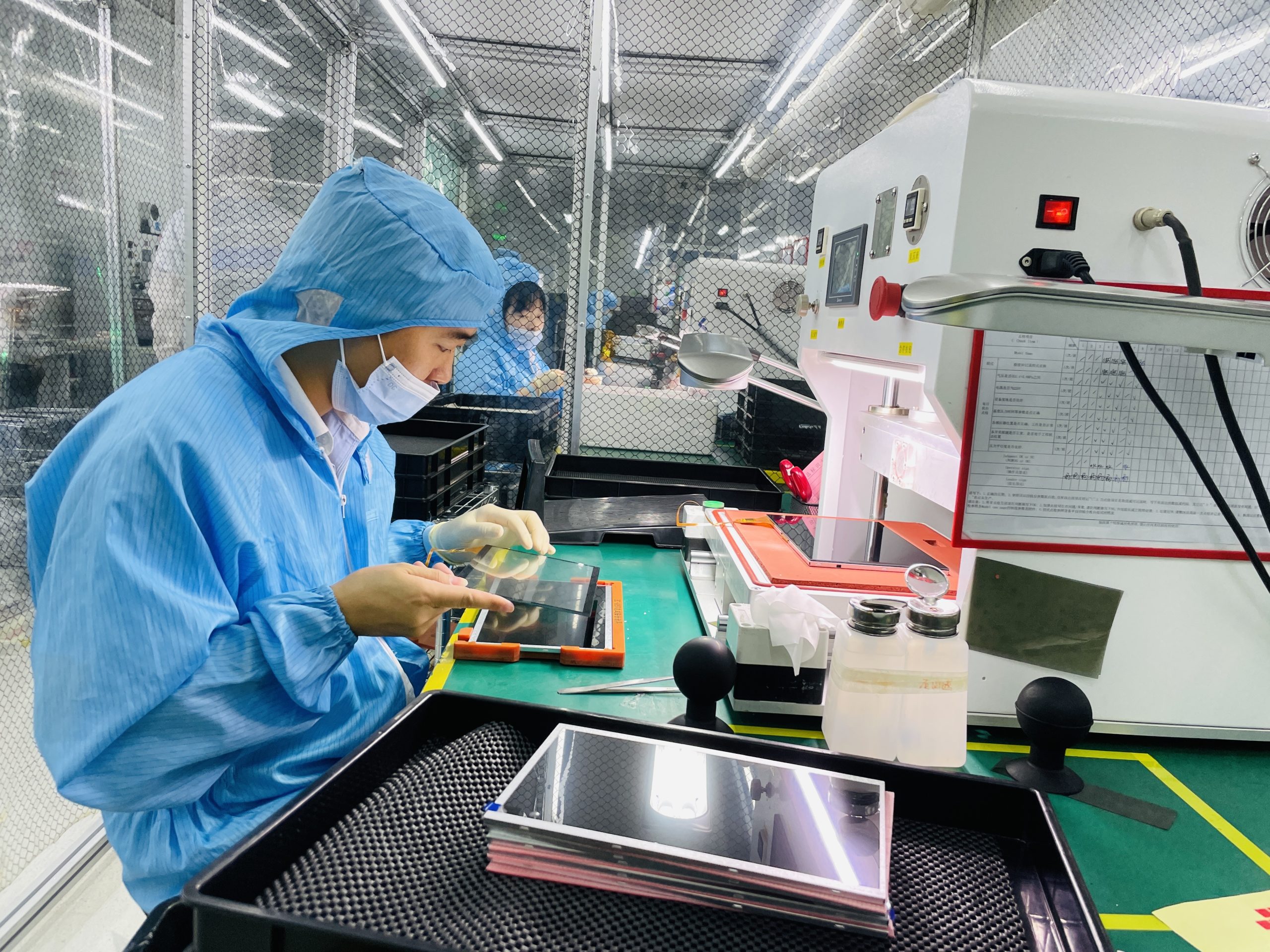
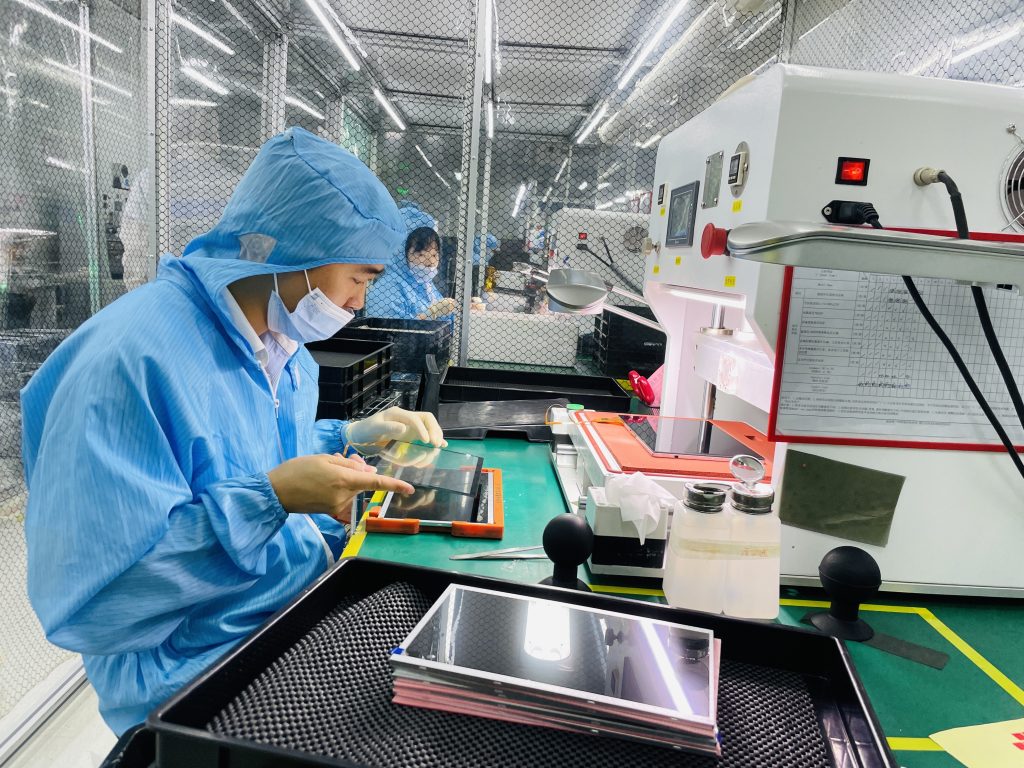
TFT Display stands for thin-film transistor display. This indicates that a thin-film transistor is connected to each pixel in the gadget. To provide flawless image quality on the screen, electrical currents that come into touch with the pixels activate transistors.
The TFT Displays are widely used in TVs, computer monitors, medical equipment, appliances, cars, kiosks, POS terminals, low-end mobile phones, industrial sensors, smart homes, and consumer electronics.
This article will highlight the feature, advantages, and disadvantages of TFT displays.
TFT Displays offer exceptional color contrast, clarity, and brightness settings, all of which may be customized to fit the requirements of any specific application.
TFT displays have a substantially greater half-life than their LED counterparts. These displays exist in various size configurations, which might affect the device's half-life depending on its use and other considerations.
The touch panels on the TFT displays come either resistive or capacitive, depending on the manufacturer. The most common touch panel is resistive due to its cheaper price point; however, you can acquire a capacitive touch screen, which is highly compatible with most modern smartphones and other electronic devices.
Aspect ratio control is very effective in ensuring there is no monitor ghosting. It enhances the clarity and quality of the images by mapping out the number of pixels in the source images to the resolution pixels on the screen.
TFT displays come in many interface layouts, enabling them to be compatible with a large variety of devices and a wide variety of technological possibilities. Because of this compatibility and versatility, TFT displays are becoming increasingly popular.
Are you seeking the most effective method to reduce the electricity you use? A conventional display panel is made up of several circuits. These circuits must use a lot of power to operate the cathode-ray image tube, and when the volume rises, the internal circuit's power consumption will undoubtedly rise as well.
In contrast, the TFT liquid crystal display screen's power consumption is far lower than that of conventional displays because its internal electrodes and driver IC mostly use it. As a result, you will finally be able to reduce the amount of money spent on energy that is reflected in your regular bills.
Image clarity is an extremely important factor to consider when utilizing TFT displays, whether on televisions, medical equipment, automobiles, or smartphones. TFT displays provide exceptionally high levels of vision to anyone, regardless of age or how tired their eyes may be.
The high visibility is due to the fact that every pixel on a TFT display screen maintains the intensity and color of the light after absorbing a signal and emits continual light, as opposed to a cathode ray tube display (CRT), which requires a bright spot to be refreshed regularly.
As a result, the LCD screen TFT has excellent visual clarity and never flickers, reducing eye strain. Ultimately, every single bit of information delivered will be simply articulated and comprehended by everyone involved.
Considering the cutting-edge technology that goes into its production, a TFT display can have an extraordinarily stunning appearance. The TFT display features custom-designed integrated components such as resistive and capacitive touch screens, contributing to its sophisticated overall appearance.
The elegance of TFT displays makes them the ideal choice for use as the screen in your television, smartphone, automobile, and any other piece of personal electronic equipment you desire.
Are you looking for a display that will give you a fast and accurate response on any command? TFT displays are the best choice. Even on displays with a screen size of up to 15 inches, response time is not a concern because an average of fewer than 30 milliseconds is more than sufficient for producing picture-perfect results. Some of the traditional displays have a lot of problems in giving a response when issuing any instruction. At some point response that comes from convectional displays will not be accurate.
TFT displays have a smaller overall footprint. They are light and easy to move around in any direction. They can be hung on walls. During business hours, they can be positioned on a rotational mount anywhere on your desk, giving you the ability to face it in any of 360 degrees.
This indicates that they do not take up a significant amount of space, making it easier to use effectively and maintain order inside a workstation. You will have more time for the most vital activities.
The LCD panel TFT uses a flat glass plate from the start, unlike typical display screens, and the screen effect is flat and right-angled, providing users a refreshing sense. LCD panels make it simpler to get high resolution on little screens. For instance, an 18-inch CRT color display often uses a resolution of 1280*1024 or more, which is not entirely suitable, whereas a 17-inch LCD can attain a resolution of 1280*1024.
The output of a great deal of light is typically one of the primary contributors to eye strain caused by display panels. However, the TFT display does not emit radiation like CRT, LED, or VFD. The LED backlight serves as the illumination source, and the blue light produced is effectively filtered by the TFT glass located in the display's front.
Therefore, you won't need to squint or rub your eyes as you do while looking at conventional screens. Hence, TFT displays are very suited for use by any person, including those with tired eyes or those who are elderly.
Depending on the generation manufacturing line to use, as well as the size of the production line itself. The construction of a TFT display fab typically requires several billion dollars. To make a display of such a large size, a high-generation production line is required.
As the cost of production of TFT displays keeps going high, it affects the purchasing and operation cost of the TFT display. Therefore, TFT displays tend to be more expensive to acquire and operate than other displays.
Compared to AMOLED screens, current micro-LED displays, and IPS LCD panels. The viewing angle of TFT screens still has to be noted in the datasheet as either 6 o'clock or 12 o'clock, and there is still an issue with grayscale inversion. The viewing angle is very narrow.
Since the optic axis of the liquid crystal is perpendicular to the surface, the display appears dark when viewed from a vertical angle relative to the substrate. However, when viewed from an oblique angle, the display does not exhibit a dark state due to light leakage caused by birefringence. The refraction becomes prevalent as the voltage increases. The reflectivity and transmission in each direction vary at varying viewing angles. This is the reason why TFT LCDs have a narrow viewing angle.
The paneling of the TFT displays is made of glass. Glares of natural light can be seen through the glass paneling when it is subjected to natural light. This renders the TFT screens useless for use outside, limiting their applicability to use exclusively inside buildings or other enclosed spaces. It will be difficult for you to operate the TFT display if you plan on carrying out your tasks while seated in an outdoor setting.
TFT displays cannot produce their light. This type of display does not have its light source; hence it requires backlighting to get the desired brightness level. Because of this, manufacturers must employ LEDs and build a structure with backlighting.
The fact that manufacturers have to use LEDs and develop a structure with backlighting makes the production and operation of TFT display highly expensive. Also, it leads to increased energy consumption when contrasted with monochrome panels and OLED (PMOLED and AMOLED) screens, which is another factor that makes TFT displays less suitable for wearable devices.
If you compare the color saturation in TFT displays with that in IPS LCD displays and AMOLED displays, you will notice that TFT displays have a very poor color saturation. As a result, anyone who values the color saturation when purchasing between these display panels will avoid the TFT display. However, various remedies for this issue arise with TFT displays.
Although it may not seem difficult to choose your LCD display, the market has been saturated with many display panels. Always keep the display's display life, response time, visual clarity, and touch sensitivity if have when shopping.
Every LCD display in the market will have some drawbacks; therefore ensure you weigh the disadvantages of the display against its benefits. As a result, getting in touch with and working with a reputable, reliable, and trusted producer of TFT LCD screens is crucial.

In the digital age, display screens have become an integral part of our lives. From the early cathode-ray tubes to today's OLED displays, display technology has undergone significant transformations. Among these milestones, Thin-Film Transistor (TFT) Displays have played a crucial role in making displays more efficient and visually appealing.
TFT Displays, also known as TFT LCD (Thin-Film Transistor Liquid Crystal Display), are a specialized type of LCD. They use thin-film transistor technology to improve image quality and contrast. This display technology is a significant improvement from the basic displays one that we used in the old time.
LCD technology emerged in the late 1960s and revolutionized the display industry. The first LCD screens were innovative for their time, but they were far from the vibrant and dynamic displays we have today. They had slow refresh rates, restrictive viewing angles, and lackluster image quality.
The transition from bulky and energy-consuming cathode-ray tube (CRT) displays to LCD screens opened up new possibilities. LCD screens were thinner, lighter, and more energy-efficient. And the LCD screens quickly became the optimal choice for computer monitors ,televisions, and other commercial filed and offering improved clarity and sharper images.
Despite the improvements made with LCD technology, there were still limitations to be overcome. This led to the introduction of TFT LCD displays, which is an important milestone in display technology evolution.
TFT LCD displays use thin-film transistor technology to provide active pixel control. This means that each pixel can be individually addressed and controlled, turns out it has fast response times. improved contrast, and enhanced image quality. The thin-film transistors act as tiny switches, allowing precise control over the liquid crystals within each pixel.
With the emergence of TFT LCD displays, the limitations of passive matrix LCD screens have been overcome. The active matrix design of TFT displays gives them faster refresh rates and wider viewing angles, making them more suitable for multimedia applications, gaming, and other visual-intensive tasks.
The introduction of TFT technology marked a significant shift in the world of display technology. TFT monitors were no longer just passive displays, but critical, highly efficient components of the overall digital experience. They were lighter, more compact, and provided sharper images, higher resolutions. This was the start of the age of portable devices, which transformed the mobile technology scene.
TFT technology quickly gained popularity and became the standard for personal computers. TFT monitors replaced bulky CRT displays, offering users improved visual experiences and ergonomic benefits. These displays provide higher resolutions, improved color reproduction, and broader viewing angles, enabling users to experience a more detailed and vibrant digital world.
The compactness and energy efficiency of TFT displays also played a significant role in the rise of portable devices. Laptops, tablets, and smartphones adopted TFT technology, offering users the convenience of mobility without compromising on display quality. TFT LCD screens became an integral part of these devices, enabling users to enjoy vivid multimedia experiences on the go.
With the evolution of display technology, new forms emerged, each with its unique set of strengths and weaknesses. For instance, AMOLED (Active-Matrix Organic Light-Emitting Diode) displays can offer deeper blacks and higher contrast ratios, thanks to their ability to completely turn off individual pixels. This results in vibrant and vivid colors that captivate the viewer.
On the other hand, TFT LCDs have become popular by achieving a desirable balance between image quality, power usage, and cost. TFT displays provide excellent color reproduction, wide viewing angles, and good visibility in various lighting conditions. Moreover, TFT technology has matured over the years, making it a reliable and well-established display solution.
The question of health is another significant aspect in this discussion. When it comes to visual comfort, TFT LCD screens are generally gentler on the eyes due to their reduced flicker, as compared to older technologies like CRT. However, like all screens, prolonged exposure can cause eye strain. Therefore, it's crucial to use any display responsibly to prevent eye fatigue.
Manufacturers have implemented various features to reduce eye strain, such as flicker-free technology and blue light filters. Flicker-free displays eliminate the rapid on-off cycling of the backlight, providing a more stable and comfortable viewing experience. Blue light filters can help reduce the amount of blue light emitted from screens, which can disrupt sleep patterns and cause eye discomfort.
TFT LCD displays provide a myriad of advantages. TFT LCD displays offer not only superior image quality and portability ,but also the flexibility of being modified to fit various sizes and shapes, making them compatible with a wide range of devices. Their lower power consumption makes them a practical choice for battery-powered devices such as smartphones and laptops.
In addition, TFT displays provide excellent color accuracy, making them ideal for tasks that demand accurate color reproduction, like graphic design and professional photography. The wide viewing angles of TFT displays ensure that the content remains visible even when viewed from different positions, making them ideal for collaborative work environments and multimedia consumption.
As we look to the future, the potential for TFT display technology seems boundless. With the relentless pace of technological advancements, we can expect further enhancements in TFT technology. These advancements are likely to lead to even more vibrant displays, better energy efficiency, and innovative applications.
Researchers and manufacturers are always looking for new materials, processes, and technologies to push the limits of display technology. They are working towards achieving higher resolutions, faster refresh rates, wider color gamuts, and even more flexible and durable displays. These advancements will enhance our visual experiences and create new opportunities in various industries, such as gaming, entertainment, healthcare, automotive, and more.
In conclusion, the evolution of TFT display technology is a fascinating journey marked by relentless innovation and adaptation. The TFT display, from its early days to its current position of dominance in the digital world, is constantly redefining our digital experiences. As we move forward into this exciting future, the journey of the TFT display is far from over. It remains committed to shaping our interaction with the digital world and transforming the way we perceive and consume visual information.